Home » Financial Tips
Category Archives: Financial Tips
How To Choose Auto Insurance That Fits Your Needs
Choosing auto insurance that fits your needs means considering risk and what you can afford in premiums and out-of-pocket after an accident. Your agent can help you decide what types of coverage to buy and the limits you need. Visit Insurance Springdale AR for more information
Standard auto policies include bodily injury liability, collision, comprehensive, and uninsured/underinsured motorist coverage. Consider a deductible option and usage-based insurance options.

The auto insurance policy you purchase provides a variety of coverages. The policy’s declarations page lists the full legal name of the insurer, your name and address, the effective and expiration dates, the premium payable, the amount and types of coverage provided, the deductibles, and the vehicle(s) insured. This is a document that should be carefully read.
Coverage includes liability protection to pay for injuries to third parties if you are found responsible for an accident. It also covers the cost of damage to their property. Medical payment coverage pays for medical expenses for you and your passengers regardless of who is at fault in an accident. This is a mandatory coverage. Uninsured motorists protection, which is also required by law, pays for your bodily injury if an uninsured or hit-and-run driver hits you.
Additional coverages include collision, which pays to repair your car if you collide with another object or rollover. Comprehensive, which provides reimbursement for damage from inclement weather, vandalism, and animals, may also be included. Rental car reimbursement coverage pays for a rental car if your car is in the shop due to a covered claim.
Many companies offer discounts for a variety of reasons. For example, safe driving records can reduce your premium, as can having a good credit history. Some companies even give lower rates to people who buy both auto and home insurance through them. Other ways to save on your premium include a multi-car discount, antitheft devices, and being a carpool member. Most states allow insurance companies to factor in customers’ credit information when determining their rates. Some, like
A variety of factors determine the cost of auto insurance. These include the cost of litigation, medical care, car repair, weather patterns, and fraud trends. Other factors include the driver’s age, driving history, and gender. Younger drivers generally pay more for auto insurance than older drivers, and women tend to have fewer accidents than men.
Your insurance agent, broker, or insurance company can provide you with a quote of the total cost of your policy before it is purchased. You can buy it at that time or wait until your renewal date. Some people may get discounted rates when they sign up for a policy with their employer.
During the application process, your insurer can run a credit report and Department of Motor Vehicle record to determine whether you’ll be accepted for coverage. You must provide an official license copy to complete the application process.
Once your application is approved, you can typically begin making payments immediately. You can pay online, update your billing information, or even cancel your auto insurance anytime. However, your insurer must give you a 15-day notice before terminating your policy.
If you’re concerned about your auto insurance history, check with your state’s Department of Motor Vehicles for information on past policies, or call LexisNexis for a CLUE report. This report, which costs $15, provides you with your claim and violation history. It’s also an excellent way to determine how much your premium will change when you claim or add a new driver. This will help you prepare for future auto expenses and make the most informed decision about your car insurance.
Car insurance is designed to help drivers cover expenses associated with an accident. To access these benefits, you will need to file a claim. When you submit a claim, your insurance company will assign it a claims number. From there, it will begin investigating your accident to determine the extent of your damages. They will likely interview all parties involved, request copies of medical records and receipts for lost wages, and inspect the accident scene to gather evidence like photos, videos, and witness testimony.
Depending on your policy details, your claims may be paid out under different sections of your policy. For example, your car insurance policy may have no-fault and liability coverage for property damage and bodily injury. In some states, you can purchase additional protection, such as uninsured/underinsured motorist coverage, personal injury protection (PIP), and medical payments coverage.
If you are involved in an accident that was not your fault, you must claim the other driver’s liability insurance. This is called a third-party claim. If someone else crashed into you, you would file a claim against their PIP or medical payments insurance, depending on your state’s laws.
When submitting a claim, stating the facts clearly and honestly is important. It is not the time to speculate about what happened or to accept blame. It would be best if you also took the time to photograph any damage done to vehicles, property, or people at the accident scene. It is also helpful to get the names, phone numbers, and insurance information of everyone at the scene, including any witnesses. Also, note each vehicle’s direction and traffic signs, if applicable.
An auto insurance exclusion is a clause that removes someone from the policy, typically because they are considered too high-risk to be insured. For example, suppose you have a spouse with a shaky driving history or children with multiple moving violations, at-fault accidents, or claims on their record. In that case, excluding them from your policy may be more cost-effective than trying to keep them on it. In some cases, insurers include exclusions in their policies to prevent fraud. If an excluded driver causes an accident, the driver cannot collect on the policyholder’s liability coverage, but they can sue for damages.
Another common exclusion is for a person who uses the car without permission from the policyholder. This type of exclusion usually applies to teenagers and younger adults who have their cars and are not listed on the policy. This may be a reasonable option for older people since they will likely only drive their vehicles a little anyway. However, if you lend your vehicle to a friend or family member, you must know whether your insurance covers this. If it isn’t, consider getting a separate car insurance policy for this individual.
Also, many policies exclude vehicle use for business purposes, though this may vary by insurer. This includes using a vehicle for the public transportation of people – like a taxi, limo, or shuttle; transportation of goods for payment, such as a delivery driver or a limo, or for any other commercial use not listed on the policy. Suppose you’re in an accident caused by an excluded driver. In that case, it may be more difficult to recover damages because the injured party will need to pursue legal action against the person driving the vehicle at the time of the accident.
Many states have minimum requirements for car insurance. These requirements are usually for bodily injury liability and property damage coverage. Bodily injury liability coverage pays for medical expenses and loss of income if you are at fault in an accident. Property damage coverage pays for repairs to your vehicle or belongings if someone else is at fault in an accident. There are also optional auto coverages that can provide additional protection. These coverages can include rental reimbursement, towing, and roadside assistance.
The policy summary explains what each type of coverage does and how it is included in your policy. It also tells you the deductibles and limits for each coverage. If you have questions, call your agent or broker. It is important to keep your policy up-to-date. Let your agent or broker know when you have a change in driver, a new vehicle, or your financial situation. If you want to cancel the policy, send a written notice with certified mail and the return receipt requested.
Meeting the minimum state requirements is important, but you should consider adding coverages to protect yourself and your family. An independent insurance agent will work with you to determine the best coverage mix. They can help you find affordable policies that fit your needs and budget. They can also help you avoid buying insurance that you don’t need. For example, a basic policy does not include collision and comprehensive coverage, but these are important add-ons if you own your car outright or have a loan. They are also necessary if you lease or finance your vehicle. These coverages will make your vehicle more attractive to potential buyers or lenders.
An Inside Look At The World Of Fashion
Fashion is what you make it to be, not what everyone else says it should be. You are your own unique person, and you decide what’s important for you. After researching different tips, it’s up to you to decide how you wish to look. Continue reading for some helpful guiding tips.
Always remember to bring the shoes you plan on wearing to a special event along when you shop for the perfect dress. This allows you to see how the shoes look with the dresses you are considering. It will also give you an idea of any alterations that may need to be made.
If you want to buy a new cologne or perfume, try a sample from the store first. Spray the scent on, and wait around fifteen minutes. Smell to see how it interacts with your own natural scent. Just because you like the way, it smells on another person does not guarantee that it will have the same scent on you.
If you like a shirt or skirt think about getting it in more than one color. Because clothes come in so many varying cuts and styles, you’re likely find it difficult to find clothes that fit well for your body type. When you do just get more than one so that you can feel great more often.
If you have very dry skin, you may want to apply moisturizer before using your favorite scented products. Doing this will help the cologne or perfume stay longer on your body. It will work best if you use an unscented moisturizer, so the smells don’t compete or create a new, unexpected scent.
Now that you’ve read this article, you should have a much better self esteem regarding fashion and your own personal flavor. Fashion is better if it’s unique, and you can do that since you’re a unique person. Remember the tips and advice you’ve read here as you work towards fashion in your life.
Nomadogen, Boat School Husson, Kolb Home Inspections, Colorado Microfinance, Freedom One World, Huhn Associates, Coreone Welding, Henderson Pool Service, Peoples Choice Law, Serra Guard Law, Triangle High Five, Arva Media, St Croix Solar, Orchid Constructions, Dennis Construction, Agas Digital, Clear Circle Metals, Colonial Motels Augeen Shores, Lebanon Enchanted Village, Maple Grove Hot Springs, The Village School Of Gaffney, Smart Cities Communities, Hawaii RDP, Lazarus Tech, Nancy Sullivan, Cheap Toner Catridge, The Content Marketer, Caring And Sharing, Columbus Roof Company, James Construction, Assuranceis, National Solar Panels, BMC Stories, Reverse Auction Research, Elwood Distilling Co, CAO Forum West, ABQ Dental, Manage Your Money, Kitchen By Jamie, Auburndale Racing.
Pros and Cons of Refinancing Your Mortgage

Refinancing your home loan can lower your lifetime interest costs and reduce your monthly payment, among many other benefits.
However, you’ll want to evaluate the pros and cons of a mortgage refinance before you apply. This will help you determine if refinancing is the right move for you.
Here’s a closer look at the advantages and disadvantages of mortgage refinancing:
Pros of refinancing your mortgageCons of refinancing your mortgageAlternatives to refinancing your mortgageWhen to refinance your mortgageHow to apply for a mortgage refinance
Pros of refinancing your mortgage
There are several advantages to refinancing a mortgage, including a potentially lower interest rate.
Lock in a better interest rate
A lower rate can reduce your lifetime interest costs by thousands of dollars. Consider refinancing when mortgage rates begin to dip. Most experts agree that you should consider refinancing if you can lock in a rate that’s 0.75 percentage points lower than your current rate.
You may also be able to lock in a better rate if your credit score is higher than when you took out your original mortgage.
Learn More: When to Refinance a Mortgage: Is Now a Good Time?
Lower your monthly payment
It’s possible to reduce your monthly payment through a mortgage refinance. You can potentially get a lower interest rate or extend your repayment term — or do both. If you’re currently struggling to pay the bills and want to keep your home loan in good standing, refinancing might be a necessary option.
If you think refinancing is the right move, Credible makes it easy. You can compare multiple lenders and see prequalified rates in as little as three minutes without leaving our platform.
Find out if refinancing is right for you
Actual rates from multiple lenders – In 3 minutes, get actual prequalified rates without impacting your credit score.Smart technology – We streamline the questions you need to answer and automate the document upload process.End-to-end experience – Complete the entire origination process from rate comparison up to closing, all on Credible.Find My Refi Rate
Checking rates will not affect your credit
Trustpilot
Tap into your home equity
A cash-out refinance can help you tap into your home equity. You’ll pay off your original mortgage with a newer, larger loan and receive the difference in cash.
You can then use the distribution to fund home improvement projects or other expenses, like credit card debt or a down payment on an investment property.
Enjoy more predictable payments
If you currently have an adjustable-rate mortgage (ARM), refinancing to a fixed interest rate will provide more stability in your monthly principal and interest payments. With a fixed-rate loan, you’ll pay the same amount every month for the entire loan term. This makes your mortgage payment easier to budget for and provides you with some peace of mind.
void mortgage insurance
Refinancing into a conventional mortgage with at least 20% interest waives private mortgage insurance (PMI) charges. This is also a way to get out of paying mortgage insurance premiums on an FHA loan.
Read: Here’s What You Need to Know About Refinancing an FHA Loan
Cons of refinancing your mortgage
Here are some of the drawbacks that accompany mortgage refinancing.
Need to pay closing costs
Just like a new home loan, you must pay closing costs with any mortgage refinance loan. These fees are approximately 2% to 5% of your loan amount.
Some of the fees you can expect to pay include:
Origination feesHome appraisalTitle insuranceCredit report fee
You may be able to roll some of the fees into your new mortgage, but this may increase your loan APR and lifetime interest costs. A mortgage payment calculator can help compare your upfront costs and potential lifetime interest costs.
If you’re planning on selling your home in the next few years, you’ll want to find your breakeven point — the point at which you’ll recoup your closing costs — to determine if refinancing is worth it.
For example: If your closing costs are $5,000 and your monthly savings is $100, you’ll need to keep your home for 50 months (slightly more than four years) to break even and offset the upfront expense.
Monthly payments could be higher
Switching to a shorter repayment period, such as 15 years instead of 30 years, will most likely increase your monthly payment as you have fewer years to pay off the loan principal. Deferring your closing costs can also increase your payment.
On a positive note, you’ll be out of debt faster and pay less interest by opting for a shorter repayment period. If you can afford the higher monthly payments, it’s a good option to consider.
Might increase the overall cost of your loan
Extending your repayment term can increase your total interest costs even if you get a lower interest rate or smaller monthly payment.
Here’s an example of how much more your total interest costs can be when refinancing to a 30-year term. This example assumes a current mortgage balance of $226,445 with 25 years remaining on an original 30-year term.
Existing mortgageRefinance mortgageStarting loan balance$250,000$226,445Remaining years2530Interest rate4.08%3.75%Monthly payment$1,206.55$1,049Total interest cost$184,356.61$199,916.59
While it’s possible to refinance to a lower interest rate and monthly payment, your total interest cost can still be higher. For this example, your new loan APR must be at least 0.70% lower than your original rate before you reach your breakeven point and start saving money.
And, assuming you don’t pay off the loan early or sell your home, refinancing your mortgage keeps you in debt longer, which might make it more difficult for you to achieve other financial goals.
Must qualify for refinancing
In addition to paying closing costs, the underwriting process requires you to satisfy your lender’s mortgage qualifications for income, credit, and debt.
Some of the mortgage refinance requirements include:
Credit score: Traditional lenders require a minimum 620 credit score. Most lenders offer the lowest refinance rates to homeowners with an excellent credit score of at least 740.Steady employment: You’ll need at least two years of reliable employment and income statements, and you may also need to show proof of sufficient cash reserves.Home equity: Many lenders require you to have at least 20% equity in your home to refinance your mortgage. Home appraisal: A home appraisal verifies your property value is higher than your requested loan amount. You may need to postpone refinancing if your mortgage is underwater since this means you owe more than the home is worth.
lternatives to refinancing your mortgage
If you’re content with your current mortgage rate and term, but you still want to access your home equity, consider either a home equity loan or a home equity line of credit (HELOC).
These two options generally have lower closing costs and might be a better fit than a cash-out refinance.
pply for a home equity loan
A home equity loan lets you borrow up to 85% of your home equity as a lump-sum payment. You repay your principal and interest with fixed monthly payments, similar to a fixed-rate mortgage. Depending on your loan terms, your repayment period can be as long as 30 years.
Here are some of the advantages of home equity loans:
Can use funds for different purposes: You can use your funds for a variety of expenses, including home repairs, medical bills, and debt consolidation. Potential tax deductions: In many cases, your interest payments are tax-deductible for home repairs and capital improvements for your primary residence.Fixed interest rate: Lenders offer fixed interest rates so you have the same monthly payment for the life of the loan.
Some of the disadvantages of home equity loans include:
Lump sum payment: You receive your entire loan amount upfront and cannot request future withdrawals. If you don’t need to spend the entire amount immediately, consider a HELOC, which allows you to make distributions as needed.Higher monthly payments: Your monthly payments can be higher than a HELOC as you start repaying the principal right away. You’re also accruing more interest than with a HELOC as your starting balance will most likely be higher.Secured debt: Home equity loans are secured debt, meaning your home is collateral. If you default on the loan, your lender has the right to foreclose on your home.
pply for a home equity line of credit
A home equity line of credit (HELOC) can be a good decision if you want to borrow from your home equity several times.
Unlike a home equity loan, you won’t receive a lump-sum payment. Instead, you’ll make withdrawals as needed during the draw period, which is usually 10 years.
A HELOC offers many advantages, including:
Potentially less interest: With a HELOC, you only have to pay interest on what you borrow. Your total interest costs, in turn, might be lower than on a home equity loan that distributes the entire loan amount upfront.Flexible withdrawal policy: You can withdraw as little or as much as you need during the draw period, up to your credit limit. Interest-only payments: Your lender may only require monthly interest payments during the draw period. However, there is no penalty to pay back the outstanding principal early.
Some of the disadvantages of a HELOC include:
Variable interest rate: Most HELOCs have a variable interest rate. If you’re not comfortable with a variable interest rate, fixed-rate HELOCs do exist, but they’re more rare.Shorter repayment period: Your repayment period may be shorter than a home equity loan, meaning your monthly payments could be higher once you start paying off the loan. Most HELOC repayment periods are between five and 20 years.Secured debt: A HELOC is using your home equity as collateral. As a result, your lender may foreclose on your home if you cannot pay off your credit line before the repayment period ends.
Don’t Miss: Refinancing a Home Equity Loan: What You Need to Know
When to refinance your mortgage
Generally, refinancing is a good decision if you find yourself in one of these situations:
You qualify for a lower interest rateYou want to shorten your loan termYour interest savings exceed the closing costsYou can afford the new monthly paymentYou’re struggling to make your mortgage paymentsYou want to switch from an adjustable-rate to a fixed-rate mortgage
How to apply for a mortgage refinance
Here are the steps you can expect to take when refinancing your mortgage:
Compare rates with different lenders. Aim to get rate quotes from at least three different lenders. This will ensure you receive a competitive rate. Credible can help you compare rates from multiple lenders without hurting your credit score.Gather and submit financial documents. After choosing your lender, gather the necessary paperwork and submit it to start the application process. You’ll want to have your tax returns, bank statements, and proof of homeowners insurance at the ready, among other documents.Get a home appraisal. Your lender will require a home appraisal to determine what your home is worth and how much equity you have.Sign your closing documents. After completing the underwriting process, you’ll pay your closing fees and sign the closing forms. Your new rate and term become effective immediately and replace your existing mortgage.
Keep Reading: How to Refinance Your Mortgage in 6 Easy Steps
The post Pros and Cons of Refinancing Your Mortgage appeared first on Credible.
15 DIY Bathroom Remodeling Projects to Tackle This Winter
If you’re a homeowner, you’ve probably got a long list of home improvement projects to tackle. While bringing your home up to date can increase its value, you can’t tackle everything at once. Instead, you’ll want to prioritize whether you’re doing a quick project or a full-on renovation.
Winter is a great time to update your bathroom. For one, it’s an indoor project, so you won’t have to deal with the cold. Plus, renovated bathrooms are well-known for producing a solid return on investment. It can also be cost-effective to start a project in the winter, since prices for materials usually rise in the early spring.
Here are 15 DIY bathroom projects to tackle this season:
Update the lightingAdd a splash of tileWallpaper the roomUpdate the vanityRecycle furniture for a new vanityInstall a towel warmerReplace the mirrorSwap out the hardwareAdd wall storageInstall eco-friendly featuresPaint the wallsImprove your shower spaceAdd window treatmentsReplace your bathroom exhaust fanAdd to your cabinet storage
1. Update the lighting

Changing an outdated light fixture can spruce up your bathroom by making it appear brighter and fresher. A hanging fixture, for instance, can add some much-needed personality, or you can install the fixture above the mirror to reflect light around the room.
This project involves temporarily disconnecting the electricity and working with wiring, so you may want to hire an expert if you’re uncomfortable with this part.
2. Add a splash of tile

Adding tile is a great way to modernize the bathroom without a complete overhaul. It’s also easy to clean, durable, and moisture-resistant — and there are lots of options.
You may decide to re-tile the floor, install tile halfway up the shower walls, or lay a simple backsplash above the sink. White subway tiles are classic, but you can get creative by arranging them in a herringbone or chevron design, or using a hexagon- or honeycomb-shaped tile.
3. Wallpaper the room

Wallpaper can add an upscale look to your powder room, whether you cover the whole thing or only apply it to one accent wall to create a focal point.
Look for “splash-proof” wallpaper, which is designed for high-humidity areas and won’t peel off as easily as regular wallpaper. You can also experiment with bold colors or patterns to create a statement.
Learn More: 18 Home Improvement Projects You Can Wrap Up in a Day
4. Update the vanity

The vanity is a great place to keep your bathroom necessities organized and out of sight, and it’s also a spot where you can add some personality.
Try painting the vanity a bold new color, installing new hardware, or using painted stencils or wallpaper on the door panels. You can also replace the top with a butcher block or granite countertop for a stylish look.
5. Recycle furniture for a new vanity

If you want to swap out the vanity completely, look for upcycled furniture to repurpose. An old dresser, nightstand, or coffee table can easily be transformed into your new bathroom organization system. You can add a fresh coat of paint and new hardware, then cut a hole on the top for a sink.
Tip: Remember to moisture-proof the counter with a few coats of clear polyurethane.
6. Install a towel warmer

If you live in a colder climate, you’ll want to stay extra toasty when getting out of the shower. A wall-mounted towel warmer keeps your towels warm and can give any bathroom a luxurious feel. Towel warmers are easy to install and typically plug into a standard outlet.
7. Replace the mirror

Replacing a frameless, rectangular mirror with a more artful version can spruce up your bathroom easily. These come in different shapes, colors, and patterns to give your bathroom a style all your own.
When exploring your options online or in a store, look for a mirror that fits the space well and comes with a hanger bracket for easy installation. For a cheaper and easier project, you can keep the original mirror and get a kit to add the frame.
8. Swap out the hardware

Sometimes accent features are all you need to make a bathroom feel brand new. Replacing the faucets, towel rack, shower head, light fixtures, and toilet paper holder are easy and budget-friendly projects to tackle in the winter.
You can go for a classic look, like brushed nickel, or use a funky design from an antique store. The point is to create a unified suite to tie the room together.
Check Out: 8 Popular Pandemic Home Renovations to Transform Your Space
9. Add wall storage

If your bathroom is a tight squeeze, you might need to get creative with storage solutions. You can install floating shelves or a wall cabinet above the toilet and add a bar with hooks next to the tub — so your towel is always at the ready. If you can’t hang anything on the walls, try positioning a storage ladder over the toilet and use it to store your bathroom necessities.
10. Install eco-friendly features

Installing energy-efficient features throughout your home may help you save on utility bills while helping the planet at the same time. On top of that, high energy-efficiency ratings can boost your home value by 2.7% on average, according to research by Freddie Mac.
For a simple, DIY project, upgrade to energy-efficient lighting with halogen incandescent, CFL, or LED light bulbs. You can also install insulated windows and an Energy Star-rated toilet to further reduce your carbon footprint — but these are more complex tasks that might require a contractor.
11. Paint the walls

A fresh coat of paint isn’t usually considered a “remodel,” but using the right color may boost your resale value. A warm, neutral color can help the bathroom appear cleaner and brighter. Or, for something different, you can use painted stencils for a flourish along the trim.
12. Improve your shower space

If your shower doesn’t have enough storage for your family’s soaps and shampoos, shower shelves can be a great addition. Corner shelves are popular, or you can install a wire caddy or build a recessed shelf into the wall.
It’s possible to add these features even if your shower is tiled, using water-resistant adhesive or screws and a lightweight material for the shelf.
13. Add window treatments

Installing new blinds can help make the bathroom feel new and even improve energy-efficiency. Closing the blinds to keep heat out in the summer might cut down on cooling costs. And in the cooler months, you can open the blinds to use natural light and keep utility costs down. Curtains also add a pop of color to an otherwise neutral bathroom.
See: 15 Home Improvement Projects to Complete Before You List Your Home
14. Replace your bathroom exhaust fan

Though you may never think about your bathroom’s exhaust fan, it’s an important part of your home’s ventilation system. These remove heat, odors, and moisture from the bathroom — helping to prevent mold and improve your air quality.
Exhaust fans usually last about 10 years. If you’re not sure when it was last replaced, it’s a smart idea to invest in a new one.
15. Add to your cabinet storage

If you’re looking for ways to maximize your storage space, consider adding static or slide-out shelves to your cabinets. You can use baskets to further organize your bathroom necessities and store extras like linens and towels. These shelves come premade at hardware stores, but you might be able to reuse parts from an old dresser or vanity.
When you’re planning out your bathroom update, you may decide to tackle just a few of these projects or put all of them on your to-do list. You’ll need to consider what your bathroom needs, your budget, and how much time you have. The good news is, they’re generally easy to do by yourself or with a partner.
If you’re doing extensive remodeling to your home and need a way to fund all of the projects, you may want to consider a cash-out refinance. With a cash-out refinance, you’ll replace your existing mortgage with a newer, larger mortgage and receive the difference as a lump sum. Credible can help you find a great rate on a cash-out refinance in just a few minutes.
Get the cash you need and the rate you deserve
Compare lendersGet cash out to pay off high-interest debtPrequalify in just 3 minutesFind My Loan
No annoying calls or emails from lenders!
Trustpilot
The post 15 DIY Bathroom Remodeling Projects to Tackle This Winter appeared first on Credible.
How Does Debt Consolidation Work?
Dealing with a large amount of debt can be overwhelming, especially if you have several monthly payments to keep track of. But if you have debt to manage, you’re not alone — as of 2021, U.S. adults carry an average of $25,112 in non-mortgage debt, according to Experian.
The good news is that there are a few strategies that could help you pay off your debt more easily. One option to consider is consolidating your debt, which will leave you with a single loan and more manageable payment.
If you’re wondering how debt consolidation works, here’s what you should know:
How does debt consolidation work?How to qualify for a debt consolidation loanCommon ways to consolidate debtHow debt consolidation affects credit scoresWhen debt consolidation makes senseWhen debt consolidation doesn’t make sense
How does debt consolidation work?
Debt consolidation is the process of taking out a personal loan to pay off your old debts, leaving you with just one loan and payment to keep track of. Depending on your credit, you might get a lower interest rate on this new loan than what you’re currently paying — which could save you money on interest and even potentially help you pay off your debt faster.
Or you could opt to extend your repayment term to reduce your payments and lessen the strain on your budget — though keep in mind that this also means you’ll pay more in interest over time.
How to qualify for a debt consolidation loan
While eligibility criteria for a debt consolidation loan can vary by lender, there are a few common requirements you’ll likely come across, including:
Good credit: You’ll typically need good to excellent credit to qualify for a personal loan for debt consolidation — a good credit score is usually considered to be 700 or higher. There are also several lenders that offer debt consolidation loans for bad credit, but these loans tend to come with higher interest rates compared to good credit loans.Verifiable income: Some lenders have a minimum income requirement while others don’t — but in either case, you’ll likely need to show proof of income.Low debt-to-income ratio: Your debt-to-income (DTI) ratio is the amount you owe in monthly debt payments compared to your income. You’ll generally need a DTI ratio no higher than 40% to get approved for a personal loan — though some lenders might require lower ratios than this.Tip: If you’re struggling to get approved for a personal loan, consider applying with a creditworthy cosigner to improve your chances. Not all lenders allow cosigners on personal loans, but some do.
Even if you don’t need a cosigner to qualify, having one could get you a lower interest rate than you’d get on your own.
If you decide to take out a personal loan to consolidate debt, be sure to shop around and compare as many lenders as possible. This way, you can find the right loan for your needs.
Credible makes this easy — you can compare your prequalified rates from our partner lenders in the table below in two minutes.
LenderFixed ratesLoan amountsMin. credit scoreLoan terms (years)Cosigners allowed?

Credible Rating>
Credible lender ratings are evaluated by our editorial team with the help of our loan operations team. The rating criteria for lenders encompass 78 data points spanning interest rates, loan terms, eligibility requirement transparency, repayment options, fees, discounts, customer service, cosigner options, and more. Read our full methodology.
View details>
9.95% – 35.99% APR$2,000 to $35,0005502, 3, 4, 5*NoFixed APR:
9.95% – 35.99% APRVariable APR:
N/AMin. credit score:
550Loan amount:
$2,000 to $35,000**Loan terms (years):
2, 3, 4, 5*Time to fund:
As soon as the next business day (if approved by 4:30 p.m. CT on a weekday)Fees:
Origination feeDiscounts:
AutopayEligibility:
Available in all states except CO, IA, HI, VT, NV NY, WVCustomer service:
Phone, emailSoft credit check:
YesLoan servicer:
AvantLoan Uses:
Debt consolidation, emergency expense, life event, home improvement, and other purposesMin. Income:
$1,200 monthly

Credible Rating>
Credible lender ratings are evaluated by our editorial team with the help of our loan operations team. The rating criteria for lenders encompass 78 data points spanning interest rates, loan terms, eligibility requirement transparency, repayment options, fees, discounts, customer service, cosigner options, and more. Read our full methodology.
View details>
6.79% – 17.99% APR$10,000 to $50,0007003, 4, 5, 6NoFixed APR:
6.79% – 17.99% APRVariable APR:
N/AMin. credit score:
700Loan amount:
$10,000 to $50,000Loan terms (years):
3 to 6Time to fund:
Next business dayFees:
No prepayment penaltyDiscounts:
NoneEligibility:
Available in all 50 statesCustomer service:
PhoneSoft credit check:
YesMin. Income:
Does not discloseLoan Uses:
Debt consolidation, home improvement, self-employment, and other purposes
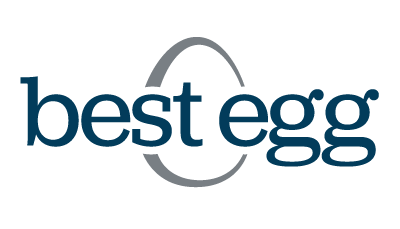
Credible Rating>
Credible lender ratings are evaluated by our editorial team with the help of our loan operations team. The rating criteria for lenders encompass 78 data points spanning interest rates, loan terms, eligibility requirement transparency, repayment options, fees, discounts, customer service, cosigner options, and more. Read our full methodology.
View details>
4.99% – 35.99% APR$5,000 to $35,0006003, 5NoFixed APR:
4.99% – 35.99% APRVariable APR:
N/AMin. credit score:
600Loan amount:
$2,000 to $50,000Loan terms (years):
2, 3, 4, 5Time to fund:
As soon as 1 – 3 business days after successful verificationFees:
Origination feeDiscounts:
NoneEligibility:
Available in all states except DC, IA, VT, and WVCustomer service:
PhoneSoft credit check:
YesLoan servicer:
Best Egg and Blue Ridge BankMin. Income:
NoneLoan Uses:
Credit card refinancing, debt consolidation, home improvement, and other purposes
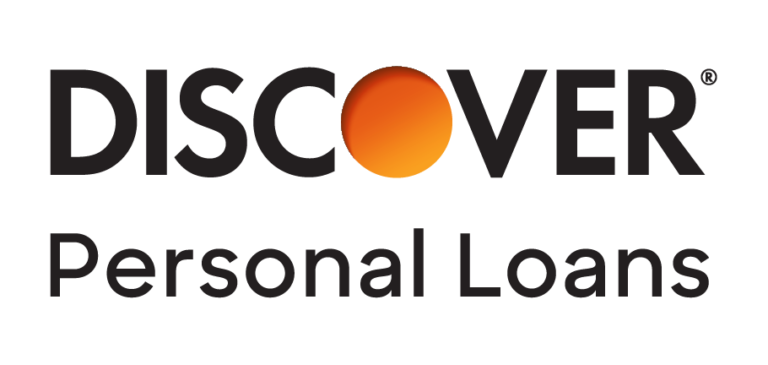
Credible Rating>
Credible lender ratings are evaluated by our editorial team with the help of our loan operations team. The rating criteria for lenders encompass 78 data points spanning interest rates, loan terms, eligibility requirement transparency, repayment options, fees, discounts, customer service, cosigner options, and more. Read our full methodology.
View details>
5.99% – 24.99% APR$2,500 to $35,0006603, 4, 5, 6, 7NoFixed APR:
5.99% – 24.99% APRMin. credit score:
660Loan amount:
$2,500 to $35,000Loan terms (years):
3, 4, 5, 6, 7Time to fund:
As soon as the next business day after acceptanceFees:
Late feeDiscounts:
NoneEligibility:
Available in all 50 statesCustomer service:
PhoneSoft credit check:
YesLoan Uses:
Auto repair, credit card refinancing, debt consolidation, home remodel or repair, major purchase, medical expenses, taxes, vacation, and wedding

Credible Rating>
Credible lender ratings are evaluated by our editorial team with the help of our loan operations team. The rating criteria for lenders encompass 78 data points spanning interest rates, loan terms, eligibility requirement transparency, repayment options, fees, discounts, customer service, cosigner options, and more. Read our full methodology.
View details>
7.99% – 29.99% APR$10,000 to $50,000Not disclosed by lender2, 3, 4, 5YesFixed APR:
7.99% – 29.99% APRMin. credit score:
Does not discloseLoan amount:
$10,000 to $50,000Loan terms (years):
2, 3, 4, 5Time to fund:
As soon as 2 business daysFees:
Origination feeDiscounts:
NoEligibility:
Available in all states except CO, CT, HI, KS, NH, NY, ND, OR, VT, WV, WI, and WYCustomer service:
PhoneSoft credit check:
YesMin. Income:
NoneLoan Uses:
Debt consolidation, home improvement, wedding, travel, medical expenses, and other purposes

Credible Rating>
Credible lender ratings are evaluated by our editorial team with the help of our loan operations team. The rating criteria for lenders encompass 78 data points spanning interest rates, loan terms, eligibility requirement transparency, repayment options, fees, discounts, customer service, cosigner options, and more. Read our full methodology.
View details>
7.04% – 35.89% APR$1,000 to $40,0006003, 5YesFixed APR:
7.04% – 35.89% APRMin. credit score:
600Loan amount:
$1,000 to $40,000Loan terms (years):
3, 5Time to fund:
Usually takes about 2 daysFees:
Origination feeDiscounts:
NoneEligibility:
Available in all 50 statesCustomer service:
Phone, emailSoft credit check:
YesLoan servicer:
LendingClub BankMin. Income:
NoneLoan Uses:
Debt consolidation, paying off credit cards, home improvement, pool loans, vacations, and other purposes
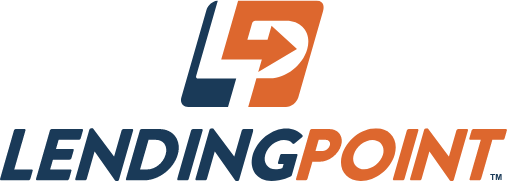
Credible Rating>
Credible lender ratings are evaluated by our editorial team with the help of our loan operations team. The rating criteria for lenders encompass 78 data points spanning interest rates, loan terms, eligibility requirement transparency, repayment options, fees, discounts, customer service, cosigner options, and more. Read our full methodology.
View details>
9.99% – 35.99% APR$2,000 to $36,5005802, 3, 4NoFixed APR:
9.99% – 35.99% APRMin. credit score:
580Loan amount:
$2,000 to $36,500Loan terms (years):
2, 3, 4Time to fund:
As soon as the next business dayFees:
Origination feeDiscounts:
AutopayEligibility:
Available in all states except NV and WVCustomer service:
Phone, emailSoft credit check:
YesMin. Income:
$20,000Loan Uses:
Home improvement, consolidate debt, credit card refinancing, relocate, make a large purchase, and other purposes

Credible Rating>
Credible lender ratings are evaluated by our editorial team with the help of our loan operations team. The rating criteria for lenders encompass 78 data points spanning interest rates, loan terms, eligibility requirement transparency, repayment options, fees, discounts, customer service, cosigner options, and more. Read our full methodology.
View details>
2.49% – 19.99% APR$5,000 to $100,0006602, 3, 4, 5, 6, 7
(up to 12 years for home improvement loans)YesFixed APR:
2.49% – 19.99% APRMin. credit score:
660Loan amount:
$5,000 to $100,000Loan terms (years):
2, 3, 4, 5, 6, 7*Time to fund:
As soon as the same business dayFees:
NoneDiscounts:
AutopayEligibility:
Available in all states except RI and VTCustomer service:
Phone, emailSoft credit check:
NoLoan servicer:
LightStreamMin. Income:
Does not discloseLoan Uses:
Credit card refinancing, debt consolidation, home improvement, and other purposes
Credible Rating>
Credible lender ratings are evaluated by our editorial team with the help of our loan operations team. The rating criteria for lenders encompass 78 data points spanning interest rates, loan terms, eligibility requirement transparency, repayment options, fees, discounts, customer service, cosigner options, and more. Read our full methodology.
View details>
6.99% – 19.99% APR1$3,500 to $40,0002660
(TransUnion FICO®️ Score 9)3, 4, 5, 6, 7NoFixed APR:
6.99% – 19.99% APR1Min. credit score:
660
(TransUnion FICO®️ Score 9)Loan amount:
$3,500 to $40,0002Loan terms (years):
3, 4, 5, 6Time to fund:
Many Marcus customers receive funds in as little as three daysFees:
NoneDiscounts:
AutopayEligibility:
Available in all 50 statesCustomer service:
PhoneSoft credit check:
YesLoan servicer:
Goldman SachsMin. Income:
$30,000Loan Uses:
Credit card refinancing, debt consolidation, home improvement, major purchase, and other purposes
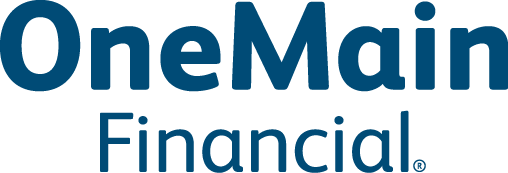
Credible Rating>
Credible lender ratings are evaluated by our editorial team with the help of our loan operations team. The rating criteria for lenders encompass 78 data points spanning interest rates, loan terms, eligibility requirement transparency, repayment options, fees, discounts, customer service, cosigner options, and more. Read our full methodology.
View details>
18.0% – 35.99% APR$1,500 to $20,000None2, 3, 4, 5YesFixed APR:
18.0% – 35.99% APRMin. credit score:
NoneLoan amount:
$1,500 to $20,000Loan terms (years):
2, 3, 4, 5Time to fund:
As soon as the same day, but usually requires a visit to a branch officeFees:
Origination feeDiscounts:
NoneEligibility:
Must have photo I.D. issued by U.S. federal, state or local governmentCustomer service:
Phone, emailSoft credit check:
YesMin. Income:
Does not disclose

Credible Rating>
Credible lender ratings are evaluated by our editorial team with the help of our loan operations team. The rating criteria for lenders encompass 78 data points spanning interest rates, loan terms, eligibility requirement transparency, repayment options, fees, discounts, customer service, cosigner options, and more. Read our full methodology.
View details>
5.99% – 17.99% APR$600 to $50,000
(depending on loan term)6601, 2, 3, 4, 5NoFixed APR:
5.99% – 17.99% APRMin. credit score:
660Loan amount:
$600 to $50,000*Loan terms (years):
1, 2, 3, 4, 5Time to fund:
2 to 4 business days after verificationFees:
NoneDiscounts:
NoneEligibility:
Does not discloseCustomer service:
Phone, emailSoft credit check:
NoMin. Income:
Does not discloseLoan Uses:
Debt consolidation, home improvement, transportation, medical, dental, life events

Credible Rating>
Credible lender ratings are evaluated by our editorial team with the help of our loan operations team. The rating criteria for lenders encompass 78 data points spanning interest rates, loan terms, eligibility requirement transparency, repayment options, fees, discounts, customer service, cosigner options, and more. Read our full methodology.
View details>
6.95% – 35.99% APR$2,000 to $40,0006403, 5NoFixed APR:
6.95% – 35.99% APRMin. credit score:
640Loan amount:
$2,000 to $40,000Loan terms (years):
3, 5Time to fund:
As soon as one business dayFees:
Origination feeDiscounts:
NoneEligibility:
Available in all states except IA, ND, WVCustomer service:
Phone, emailSoft credit check:
YesMin. Income:
NoneLoan Uses:
Debt consolidation, home improvement, vehicles, small business, new baby expenses, and other purposes

Credible Rating>
Credible lender ratings are evaluated by our editorial team with the help of our loan operations team. The rating criteria for lenders encompass 78 data points spanning interest rates, loan terms, eligibility requirement transparency, repayment options, fees, discounts, customer service, cosigner options, and more. Read our full methodology.
View details>
4.74% – 19.28% APR10$5,000 to $100,000Does not disclose2, 3, 4, 5, 6, 7YesFixed APR:
4.74% – 19.28% APR10Min. credit score:
Does not discloseLoan amount:
$5,000 to $100,000Loan terms (years):
2, 3, 4, 5, 6, 7Time to fund:
3 business daysFees:
NoneDiscounts:
AutopayEligibility:
Available in all states except MSCustomer service:
Phone, emailSoft credit check:
YesMin. Income:
Does not discloseLoan Uses:
Solely for personal, family, or household uses

Credible Rating>
Credible lender ratings are evaluated by our editorial team with the help of our loan operations team. The rating criteria for lenders encompass 78 data points spanning interest rates, loan terms, eligibility requirement transparency, repayment options, fees, discounts, customer service, cosigner options, and more. Read our full methodology.
View details>
8.93% – 35.93% APR7$1,000 to $50,0005603 to 5 years 8NoFixed APR:
8.93% – 35.93% APR7Min. credit score:
560Loan amount:
$1,000 to $50,000Loan terms:
3 to 5 years 8Time to fund:
Within one day, once approved9Loan types:
Debt consolidation, pay off credit cards, home improvements, unexpected expenses, home and auto repairs, weddings, and other major purchasesFees:
Origination feeDiscounts:
AutopayEligibility:
A U.S. citizen or permanent resident; not available in DC, SC, WVCustomer service:
Phone, emailSoft credit check:
Yes

Credible Rating>
Credible lender ratings are evaluated by our editorial team with the help of our loan operations team. The rating criteria for lenders encompass 78 data points spanning interest rates, loan terms, eligibility requirement transparency, repayment options, fees, discounts, customer service, cosigner options, and more. Read our full methodology.
View details>
5.94% – 35.97% APR$1,000 to $50,0005602, 3, 5, 6NoFixed APR:
5.94% – 35.97% APRMin. credit score:
560Loan amount:
$1,000 to $50,000*Loan terms (years):
2, 3, 5, 6Time to fund:
Within a day of clearing necessary verificationsFees:
Origination feeDiscounts:
AutopayEligibility:
Available in all states except West VirginiaCustomer service:
EmailSoft credit check:
YesMin. Income:
Does not discloseLoan Uses:
Debt consolidation, credit card refinancing, home improvement, and other purposes

Credible Rating>
Credible lender ratings are evaluated by our editorial team with the help of our loan operations team. The rating criteria for lenders encompass 78 data points spanning interest rates, loan terms, eligibility requirement transparency, repayment options, fees, discounts, customer service, cosigner options, and more. Read our full methodology.
View details>
4.37% – 35.99% APR4$1,000 to $50,00055803 to 5 years4NoFixed APR:
4.37% – 35.99% APR4Min. credit score:
580Loan amount:
$1,000 to $50,0005Loan terms (years):
3 to 5 years4Time to fund:
As fast as 1 business day6Fees:
Origination feeDiscounts:
NoneEligibility:
Available in all 50 statesCustomer service:
Phone, emailSoft credit check:
YesMin. Income:
$12,000Loan Uses:
Payoff credit cards, consolidate debt, take a course or bootcamp, relocate, make a large purchase, and other purposesCompare rates from these lenders without affecting your credit score. 100% free!
Compare Now
Trustpilot
All APRs reflect autopay and loyalty discounts where available | LightStream disclosure | 10SoFi Disclosures | Read more about Rates and Terms
Common ways to consolidate debt
There are several kinds of loans that can be used to consolidate debt. Keep in mind that the right choice for you will depend on your unique situation as well as your financial goals.
Personal loan
A personal loan is a type of installment loan that’s taken out as a lump sum and paid back in equal installments over time. With a personal loan, you can typically borrow anywhere from $600 to $100,000 with repayment terms from one to seven years, depending on the lender.
Pros
Fixed payments: Personal loans typically come with fixed interest rates, which means your payments will stay the same throughout the life of your loan.Could lower your interest rate: Depending on your credit, you might qualify for a lower interest rate on a personal loan than what you’re currently paying. Personal loans also tend to have lower interest rates compared to other options like credit cards.Might reduce your payments: If you opt to extend your repayment term, you could get a lower, more affordable monthly payment. Just remember that choosing a longer term means you’ll pay more in interest over time, though.
Cons
Fewer options for bad credit: You’ll generally need good to excellent credit to qualify for a personal loan. This means you could have a hard time getting approved if you have poor or fair credit.Might come with fees: Some personal loan lenders charge fees, such as origination fees or late fees. These can increase your overall loan cost. Keep in mind that if you take out a loan with one of Credible’s partner lenders, you won’t have to worry about prepayment penalties.No rewards or perks: Unlike options like credit cards, personal loans don’t provide any rewards or perks.
Learn More: Debt Consolidation vs. Personal Loan: What Is the Difference?
Balance transfer card
Another option for consolidating debt is with a balance transfer card. This is a type of credit card that you use to transfer your balance from one card to another.
Keep in mind that how much you’ll actually be able to consolidate with a balance transfer card will depend on your card issuer and the limit you’re given.
Pros
0% APR: Some balance transfer cards come with a 0% APR introductory period, which means you could avoid paying interest if you repay your balance before this period ends. However, if you can’t pay off the card in time you could get stuck with some hefty interest charges. Might come with rewards or perks: Depending on the card you choose, you might have access to rewards or perks, such as cash back or travel points.Can help you establish credit: By consistently making on-time payments on your card, you could see an improvement in your credit over time.
Cons
Fees: You’ll usually have to pay a balance transfer fee, which is typically 3% to 5% of the amount you want to transfer.Higher interest rates: Following a 0% APR period, the rates on balance transfer cards can be higher compared to other options like personal loans.Could lead to more debt: While a balance transfer card can be used for debt consolidation, it’s still another credit card. For some people, it could be tempting to use your new card to rack up more debt.
Check Out: Credit Card Consolidation Loans
401(k) loan
If you have money stashed away in a 401(k), you could consider borrowing from it to consolidate your debt. With a 401(k) loan, you can generally borrow up to 50% of your vested account balance or $50,000, whichever is less.
As long as you pay this money back according to the loan terms, you can avoid having the 10% penalty that typically comes with early retirement account withdrawals. You’ll typically have up to five years to repay a 401(k) loan.
Pros
No credit check: Unlike most other loans, 401(k) loans don’t require a credit check.Doesn’t affect your credit: A 401(k) loan won’t be reported to the credit bureaus, which means it won’t impact your credit score.Lower interest rates: Depending on your credit, the interest rate on a 401(k) loan could be lower than what you’d get on a personal loan. Additionally, the interest you pay will be added to your 401(k) — meaning you could end up with a higher retirement savings balance than what you started with.
Cons
Loss of investment gains: By taking money out of your 401(k) account, you’ll be missing out on the overall investment gains you would have had. Also keep in mind that because interest rates on 401(k) accounts tend to be low, you might not pay enough back in interest to make up for the lost gains.Limited loan amounts: You can only borrow up to 50% of your vested balance or $50,000, whichever is less. If you have a large amount of debt to consolidate, this might not be enough.Employment requirements: You must remain employed with the employer that sponsors your 401(k) until your loan is paid back — meaning you could end up stuck in your job. And if you’re laid off before repaying the loan, you’ll have to pay the entire loan back the following year or end up facing taxes and penalties.
Learn More: Debt Consolidation vs. Bankruptcy: How to Choose
lternative option: Debt management plan
Unlike other options, participating in a debt management plan doesn’t pay off your debts with a new loan. Instead, you’ll work with a nonprofit debt counseling agency — such as the National Foundation for Credit Counseling — to set up a payment plan with your creditors.
Once this plan is in place, you’ll make monthly payments to the agency, which will send the funds directly to your creditors. This will continue until your debts are paid off — typically within five years or less.
Pros
Waived finance charges or fees: Some creditors might be willing to waive finance charges or fees as well as potentially lower your monthly payments if you sign up for a debt management plan. Could help your credit: If you make all of your payments on time and successfully pay off your debts, you could see an improvement in your credit. Less contact with creditors: Your credit counselor will negotiate with your creditors on your behalf. Additionally, if any of your accounts have been sent to collections, signing up for a debt management plan should get the collection agencies to stop calling — however, this could take up to several months while the paperwork is processed.
Cons
Could come with fees: Depending on the agency you work with, you might have to pay fees for a debt management plan. These typically include an initial setup fee as well as monthly fees. Might not include all of your debts: Some loans generally aren’t eligible for debt management plans, such as secured debts and certain unsecured debts like student loans.Loss of credit cards: You’ll typically have to close any credit cards included in a debt management plan, meaning you’ll have less access to credit.
How debt consolidation affects credit scores
If you apply for a new loan to consolidate your debt, the lender will perform a credit check to determine your creditworthiness. This could cause a slight drop in your credit score — though this is usually only temporary and your score will likely bounce back within a few months.
Additionally, debt consolidation could actually end up helping your credit. For example, if you make on-time payments on your new loan, you see an improvement in your credit score over time. Ultimately, the positive effects of a debt consolidation loan on your credit could far outweigh any initially negative impact.
Check Out: How Debt Consolidation Loans Can Help Your Credit Score
When debt consolidation makes sense
While consolidating your debt might be a good idea in some cases, it isn’t the right move for everyone. Here are a few instances where taking out a debt consolidation loan could make sense:
You want to reduce the number of monthly payments you have
Managing multiple payments with their own due dates can be difficult. By consolidating your debt, you’ll have just one monthly payment to worry about.
You have a decent credit score that might qualify for a low interest rate
If you have good to excellent credit, you might qualify for a lower interest rate than what you’re currently paying. This could save you money on interest as well as potentially help you pay off your debt faster.
You’re focused on controlling your spending
It can be easy to get in the habit of swiping your credit cards without thinking while continuing to make only the minimum required payments.
If you want to take control of your debt, a debt consolidation loan could help — but you’ll also need to build and commit to better spending habits so you won’t end up in the same situation again.
When debt consolidation doesn’t make sense
And here are some scenarios where debt consolidation might not be the best idea:
You have a small amount of debt that can be repaid quickly
If you can quickly pay off your debts, going through the trouble of consolidating them likely won’t be worth it, especially if it comes with fees. Instead, it’s probably a better idea to simply focus on repaying your debt as soon as you can.
Your credit score may prevent you from qualifying for a lower interest rate
You’ll generally need good to excellent credit not only to be eligible for a debt consolidation loan but also to qualify for a favorable interest rate. If you have poor or fair credit, you might have a hard time securing a decent rate — or even getting approved for a loan at all.
You’re not ready to change your spending habits
For debt consolidation to be worthwhile, you have to avoid racking up more debt. If you’re unable to give up your old spending habits, then it’s probably better to wait on consolidation.
If you decide to take out a personal loan to consolidate debt, remember to consider as many lenders as you can to find the right loan for you. This is easy with Credible: You can compare your prequalified rates from multiple lenders in two minutes — without affecting your credit.
Ready to find your personal loan?
Credible makes it easy to find the right loan for you.
Free to use, no hidden feesOne simple form, easy to fill out and your info is protectedMore options, pick the loan option that best fits your personal needsHere for you. Our team is here to help you reach your financial goalsFind My Rate
Checking rates won’t affect your credit
Trustpilot
The post How Does Debt Consolidation Work? appeared first on Credible.
VA Streamline Refinance: How It Works and When to Get One
If you’re a veteran with a VA home loan, there’s a simple way to refinance that could save you money.
A VA streamline refinance — or VA interest rate reduction refinance loan (IRRRL) — may be able to lower your interest rate, shorten your mortgage term, or shrink your monthly payment, often with no appraisal or credit underwriting.
Here’s what you need to know about VA streamline refinances:
What is a VA streamline refinance (VA IRRRL)?VA streamline refinance loan benefitsDrawbacks of VA streamline refinance loansVA streamline refinance eligibility guidelinesVA IRRRL costsHow to apply for a VA IRRRLIs a VA streamline refinance loan right for you?
What is a VA streamline refinance (VA IRRRL)?
If you’re an active-duty military service member, veteran, or surviving spouse with a VA mortgage, you might be thinking about refinancing to lower the interest rate on your current home loan.
An IRRRL can help you accomplish this by replacing your existing VA loan with a new one that has a different interest rate and monthly payment, and possibly a different term.
What makes this refinance “streamlined” is that it typically requires fewer steps and less paperwork. For instance, the VA doesn’t require an appraisal or credit underwriting for this loan, which means you’ll usually close faster than someone doing a conventional refinance.
Learn More: How Soon You Can Refinance: Typical Waiting Periods By Home Loan
VA streamline refinance rates
Veterans United, a major originator of VA loans, says that the interest rates on VA loans tend to be 0.5% to 1.0% lower than the interest rates on conventional mortgages. And lending statistics from ICE Mortgage Technology show that from January through August 2021, VA loan rates were about 0.3 percentage points lower than conventional loan rates on a 30-year, fixed-rate mortgage.
Good to know: While somewhat helpful, general figures like these won’t tell you what type of mortgage you’ll get the best rate on. Your personalized rate depends on your financial situation and what’s happening in the mortgage market when you apply.
Rates also vary by mortgage lender, loan term, and how much home equity you have. For example, if you have at least 20% equity and can pass underwriting and an appraisal, you might find a better interest rate and lower APR by refinancing into a conventional loan, even if you qualify for an IRRRL.
Getting pre-approved with multiple lenders will give you the best idea of what rates you qualify for. It’ll also allow you to compare loan costs and get a taste of the lender’s customer service before committing to the mortgage approval process. While Credible doesn’t offer VA streamline refinances, we can help you find a great rate if you’re refinancing a conventional loan.
Find out if refinancing is right for you
Actual rates from multiple lenders – In 3 minutes, get actual prequalified rates without impacting your credit score.Smart technology – We streamline the questions you need to answer and automate the document upload process.End-to-end experience – Complete the entire origination process from rate comparison up to closing, all on Credible.Find My Refi Rate
Checking rates will not affect your credit
Trustpilot
VA streamline refinance loan benefits
A VA streamline refinance has several appealing advantages:
Competitive rates: VA loan rates tend to be similar to or slightly less than conventional loan rates.No private mortgage insurance: Even with less than 20% equity, there’s no PMI or equivalent for VA loans like there is for conventional loans and FHA loans.No appraisal: A no-appraisal refinance will save you a few hundred dollars in upfront costs. It also means you may be able to refinance a home that’s lost value.Less documentation: A VA streamline refinance doesn’t require underwriting, so you may be able to forgo gathering bank statements and tax returns for lenders.Closing cost financing: Avoid out-of-pocket costs by rolling closing costs into your new loan.Quick closing: No underwriting and no appraisal means it likely won’t take as long to refinance your home.No occupancy requirement: You can do a streamline refinance on a home you no longer occupy as your primary residence.Catch up if you’ve fallen behind: If your VA loan is past due, you may be able to use an IRRRL with credit underwriting to catch up on overdue payments, pay off late fees, and get into a more affordable loan that will stabilize your situation.Good to know: The VA’s lending guidelines don’t require credit underwriting or an appraisal for an IRRRL, but they also don’t forbid it. Lenders may still want to check your credit or order an appraisal, and if they do, they’re allowed to charge you for those costs.
Drawbacks of VA streamline refinance loans
Even though a VA streamline refinance is meant to be money-saving and efficient, you should understand how its drawbacks might affect you:
Funding fee: You’ll pay a funding fee each time you get a VA loan. The fee is 0.5% of the loan amount for an IRRRL.Existing VA loan required: If you have a conventional loan or FHA loan, you’re not eligible for an IRRRL. However, you may qualify for a VA cash-out refinance.Closing costs: Expect to pay fees for loan origination, title insurance, and local government requirements.Restarting your loan term: Many borrowers choose the same loan term when they refinance. If you currently have a 30-year loan that you’ve been paying for four years, you’ll be mortgage-free in 26 years. But if you refinance into a new 30-year loan, you’ll have to start over.No cash out: Borrowers are not allowed to cash out any equity with an IRRRL unless the money is a reimbursement for energy-efficient home improvements completed within 90 days of closing and costing no more than $6,000.Waiting period: You’re not eligible for an IRRRL until you’ve had your existing VA loan for 210 days and made six consecutive monthly payments.Tip: You can avoid restarting your loan term by refinancing into a shorter term or prepaying principal on your new mortgage. If you refinance into a shorter term and your new payment is at least 20% higher than your existing payment, you’ll have to go through underwriting.
Compare Your Options: 3 Ways to Refinance a VA Loan
VA streamline refinance eligibility guidelines
Qualifying for a VA streamline refinance can be easier than qualifying for other refinance loans. Here are the key criteria and a brief explanation of each one:
RequirementDescriptionYou’re refinancing a VA loanYou can’t use a VA IRRRL to refinance a conventional, FHA, or USDA loan.You’re no more than 30 days behind on paymentsIf you’re more than 30 days behind, you’ll have to go through underwriting.The home has been your primary residenceIt’s OK if your home is not your primary residence anymore or won’t be after you refinance, as long as it was previously.Your new loan won’t push back your payoff date by more than 10 yearsFor example, if you have 12 years left on your VA loan, your new loan term can’t be longer than 22 years. That means you wouldn’t be able to refinance into a 30-year loan. Your new loan will have a lower interest rateOne exception: You can refinance into a higher rate if you’re refinancing an adjustable-rate mortgage (ARM).You don’t want to cash out any equityThere’s no cash-out refinance option with an IRRRL. Look into a VA cash-out refinance instead.
VA IRRRL costs
The closing costs for a VA streamline refinance are similar to the closing costs for other VA loans. However, you likely won’t have to pay for an appraisal, which will save you a few hundred dollars. Here are some of the closing costs often associated with a VA IRRRL:

Closing costs typically range from 2% to 5% of the loan amount. Most borrowers pay an origination fee, title insurance fee, and deed recording fee. You may also owe local taxes, which are inexpensive in some areas and quite costly in others. And some borrowers choose to prepay mortgage interest through points in exchange for a lower interest rate.
A closing cost unique to VA loans is the VA funding fee: on an IRRRL, the fee is 0.5%, or $500 for every $100,000 borrowed. You may be exempt if you’re receiving payments for a service-connected disability or you’ve earned a Purple Heart.
Rolling closing costs into your VA IRRRL
An IRRRL allows you to roll your closing costs into the loan. You might benefit from this option if
you stand to save a lot from refinancing but don’t have cash on hand. It can also be a smart move if you’re planning to sell your home the next time you get permanent change of station (PCS) orders. It probably doesn’t make sense to pay a lot up front for a loan you’ll have short term.
On a 30-year mortgage, here’s how much more you would pay over the life of the loan by rolling $12,000 in closing costs (4% of $300,000) into the loan instead of paying them up front.
Interest ratePay closing costs up frontRoll closing costs into loanAdditional cost3%$12,000.00$18,345.30$6,345,304%$12,000.00$20,721.16$8,721.165%$12,000.00$23,388.64$11,388.64
While inflation is normally seen as a bad thing, it can be good for mortgage debtors with fixed interest rates. As years pass, even modest price and income inflation can make your mortgage debt feel less expensive.
In other words, while an extra $6,300 may sound like a lot today, it’ll feel like less and less each year due to inflation. Still, the higher your interest rate, the less you may want to borrow.
How to apply for a VA IRRRL
If you apply for a VA IRRRL, the process will look something like this:
Identify reputable lenders that offer a VA streamline refinance.Submit a pre-approval application online or by phone with at least three lenders.Compare your Loan Estimate from each company, looking for the best terms for your situation.Decide how many points to pay, if any, to lower your rate.When you’re happy with current interest rates, lock your rate.Submit any supporting documents your lender asks for. Your lender will usually be able to obtain your VA loan certificate of eligibility (COE) for you.Sign the paperwork to close on your loan.
Read: How Often Can You Refinance Your Mortgage?
Is a VA streamline refinance loan right for you?
Refinancing an existing home loan into a new loan may be a good idea if you’ll be able to lower your interest rate by at least one percentage point. It also makes sense if you expect to keep your new loan long enough to break even on closing costs.
A VA streamline refinance in particular may be right for you if you’ve lost your job, your credit score has dropped, your income has decreased, or your home’s value has declined. Since lenders aren’t required to order an appraisal or perform credit underwriting for an IRRRL, this type of refinance could help you keep your home if times have gotten tough.
Tip: If you’re struggling to pay your mortgage, contact the Department of Veterans Affairs. They will assign a loan technician to help you.
If you plan to move soon or can’t lower your rate, refinancing may not help you. And if you have at least 20% equity, good credit, and a steady income, it’s worth comparing quotes for both an IRRRL and a conventional refinance.
No matter which type of refinance you decide to pursue, comparing offers from multiple lenders can help you save money. While Credible doesn’t offer VA loans, we can help you see customized, prequalified rates for a conventional refinance — checking rates with us won’t impact your credit score.
window.credibleAsyncInit = function() {
CredibleSDK.initWidget(‘#credible-rate-table’, {
environment: ‘production’,
product: {
marketplace: ‘mortgage-combined’,
type: ‘rate-table’,
variation: ‘shortened’,
loantype: ‘refinance’,
},
analytics: {
source: ‘credible_blog’,>
Keep Reading: How to Refinance Your Mortgage With Bad Credit
The post VA Streamline Refinance: How It Works and When to Get One appeared first on Credible.
How to Pay Off $10,000 in Credit Card Debt
Facing a large amount of credit card debt can feel overwhelming, especially since it might take a while to pay off. If you have $10,000 in credit card debt, it could take over a decade to repay if you make only minimum payments.
However, there are a few strategies that could make it easier to pay off $10,000 in credit card debt.
Here are four ways to pay off $10,000 in credit card debt:
Consolidate your debtWork with your credit card companyChoose a debt payoff strategyReevaluate your current spending
1. Consolidate your debt
Depending on your credit, consolidating your credit card debt might get you a lower interest rate — this could save you money on interest as well as potentially help you pay off your debt more quickly.
Here are a few options for consolidating credit card debt:
Take out a credit card consolidation loan
Best if: You have multiple high-interest credit cards to consolidate.
A credit card consolidation loan is a type of personal loan specifically used to consolidate credit card debt. If you have good to excellent credit, you might qualify for a lower interest rate than what you’re currently paying — this could save you hundreds or even thousands of dollars on interest charges.
Or you could opt to extend your repayment term to lower your monthly payments and lessen the strain on your budget. Just keep in mind that choosing a longer term means you’ll pay more in interest over time.
For example, here’s how much someone might save by consolidating their credit card debt with a personal loan:
Pros
Fixed rates: Personal loan rates are fixed, which means your payments will stay the same throughout the life of the loan. Additionally, personal loans usually have lower interest rates compared to credit cards.Could get a lower interest rate: If you have good credit, you might get a lower interest rate with a credit card consolidation loan.Fast loan process: Many personal loan lenders provide a quick and easy application process. If you’re approved, you’ll generally have your funds within a week — though some lenders will fund loans as soon as the same or next business day after approval.
Cons
Fewer options for poor or fair credit: You’ll typically need good to excellent credit to qualify for a personal loan — especially if you want to get a lower interest rate. There are also several lenders that offer personal loans for bad credit, but these loans usually come with higher interest rates compared to good credit loans.Might come with fees: Some lenders charge fees on personal loans, such as origination or late fees.No perks or rewards: Personal loans don’t offer the perks and rewards that sometimes come with credit cards.Tip: If you have bad credit and are struggling to get approved for a personal loan, consider applying with a creditworthy cosigner to improve your chances. Not all lenders allow cosigners on personal loans, but some do.
Even if you don’t need a cosigner to qualify, having one might get you a lower interest rate than you’d get on your own.
If you decide to take out a personal loan to consolidate credit card debt, be sure to consider as many lenders as possible to find the right loan for your needs.
Credible makes this easy — you can compare your prequalified rates from our partner lenders in the table below in two minutes.
LenderFixed ratesLoan amountsMin. credit scoreLoan terms (years)

Credible Rating>
Credible lender ratings are evaluated by our editorial team with the help of our loan operations team. The rating criteria for lenders encompass 78 data points spanning interest rates, loan terms, eligibility requirement transparency, repayment options, fees, discounts, customer service, cosigner options, and more. Read our full methodology.
View details>
9.95% – 35.99% APR$2,000 to $35,0005502, 3, 4, 5*Fixed APR:
9.95% – 35.99% APRVariable APR:
N/AMin. credit score:
550Loan amount:
$2,000 to $35,000**Loan terms (years):
2, 3, 4, 5*Time to fund:
As soon as the next business day (if approved by 4:30 p.m. CT on a weekday)Fees:
Origination feeDiscounts:
AutopayEligibility:
Available in all states except CO, IA, HI, VT, NV NY, WVCustomer service:
Phone, emailSoft credit check:
YesLoan servicer:
AvantLoan Uses:
Debt consolidation, emergency expense, life event, home improvement, and other purposesMin. Income:
$1,200 monthly

Credible Rating>
Credible lender ratings are evaluated by our editorial team with the help of our loan operations team. The rating criteria for lenders encompass 78 data points spanning interest rates, loan terms, eligibility requirement transparency, repayment options, fees, discounts, customer service, cosigner options, and more. Read our full methodology.
View details>
6.79% – 17.99% APR$5,000 to $35,0007401, 2, 3, 4, 5Fixed APR:
6.79% – 17.99% APRVariable APR:
N/AMin. credit score:
740Loan amount:
$5,000 to $35,000Loan terms (years):
1, 2, 3, 4, 5Time to fund:
Next business dayFees:
No prepayment penaltyDiscounts:
NoneEligibility:
Available in all 50 statesCustomer service:
PhoneSoft credit check:
YesMin. Income:
Does not discloseLoan Uses:
Debt consolidation, home improvement, self-employment, and other purposes
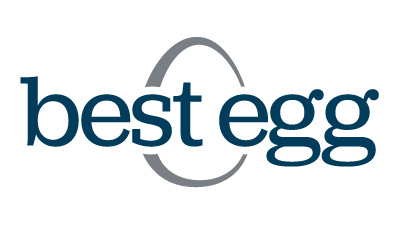
Credible Rating>
Credible lender ratings are evaluated by our editorial team with the help of our loan operations team. The rating criteria for lenders encompass 78 data points spanning interest rates, loan terms, eligibility requirement transparency, repayment options, fees, discounts, customer service, cosigner options, and more. Read our full methodology.
View details>
4.99% – 35.99% APR$2,000 to $50,0006003, 5Fixed APR:
4.99% – 35.99% APRVariable APR:
N/AMin. credit score:
600Loan amount:
$2,000 to $50,000Loan terms (years):
2, 3, 4, 5Time to fund:
As soon as 1 – 3 business days after successful verificationFees:
Origination feeDiscounts:
NoneEligibility:
Available in all states except DC, IA, VT, and WVCustomer service:
PhoneSoft credit check:
YesLoan servicer:
Best Egg and Blue Ridge BankMin. Income:
NoneLoan Uses:
Credit card refinancing, debt consolidation, home improvement, and other purposes
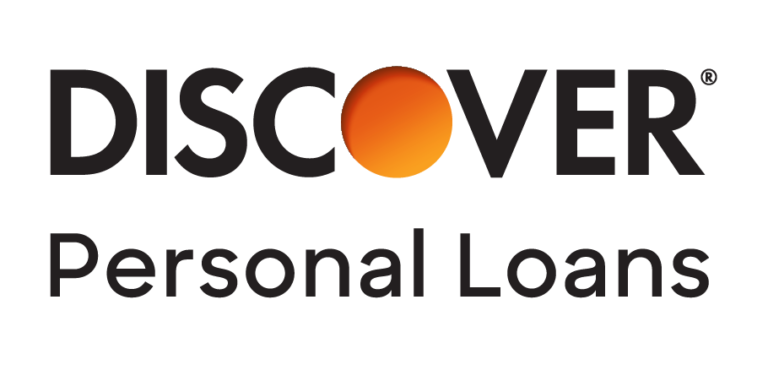
Credible Rating>
Credible lender ratings are evaluated by our editorial team with the help of our loan operations team. The rating criteria for lenders encompass 78 data points spanning interest rates, loan terms, eligibility requirement transparency, repayment options, fees, discounts, customer service, cosigner options, and more. Read our full methodology.
View details>
6.99% – 24.99% APR$2,500 to $35,0006603, 4, 5, 6, 7Fixed APR:
6.99% – 24.99% APRMin. credit score:
660Loan amount:
$2,500 to $35,000Loan terms (years):
3, 4, 5, 6, 7Time to fund:
As soon as the next business day after acceptanceFees:
Late feeDiscounts:
NoneEligibility:
Available in all 50 statesCustomer service:
PhoneSoft credit check:
YesLoan Uses:
Auto repair, credit card refinancing, debt consolidation, home remodel or repair, major purchase, medical expenses, taxes, vacation, and wedding

Credible Rating>
Credible lender ratings are evaluated by our editorial team with the help of our loan operations team. The rating criteria for lenders encompass 78 data points spanning interest rates, loan terms, eligibility requirement transparency, repayment options, fees, discounts, customer service, cosigner options, and more. Read our full methodology.
View details>
7.99% – 29.99% APR$10,000 to $35,000Not disclosed by lender2, 3, 4, 5Fixed APR:
7.99% – 29.99% APRMin. credit score:
Does not discloseLoan amount:
$10,000 to $50,000Loan terms (years):
2, 3, 4, 5Time to fund:
As soon as 2 business daysFees:
Origination feeDiscounts:
NoEligibility:
Available in all states except CO, CT, HI, KS, NH, NY, ND, OR, VT, WV, WI, and WYCustomer service:
PhoneSoft credit check:
YesMin. Income:
NoneLoan Uses:
Debt consolidation, home improvement, wedding, travel, medical expenses, and other purposes

Credible Rating>
Credible lender ratings are evaluated by our editorial team with the help of our loan operations team. The rating criteria for lenders encompass 78 data points spanning interest rates, loan terms, eligibility requirement transparency, repayment options, fees, discounts, customer service, cosigner options, and more. Read our full methodology.
View details>
7.04% – 35.89% APR$1,000 to $40,0006003, 5Fixed APR:
7.04% – 35.89% APRMin. credit score:
600Loan amount:
$1,000 to $40,000Loan terms (years):
3, 5Time to fund:
Usually takes about 2 daysFees:
Origination feeDiscounts:
NoneEligibility:
Available in all 50 statesCustomer service:
Phone, emailSoft credit check:
YesLoan servicer:
LendingClub BankMin. Income:
NoneLoan Uses:
Debt consolidation, paying off credit cards, home improvement, pool loans, vacations, and other purposes
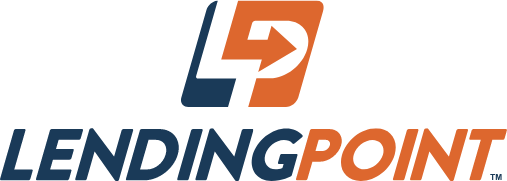
Credible Rating>
Credible lender ratings are evaluated by our editorial team with the help of our loan operations team. The rating criteria for lenders encompass 78 data points spanning interest rates, loan terms, eligibility requirement transparency, repayment options, fees, discounts, customer service, cosigner options, and more. Read our full methodology.
View details>
15.49% – 35.99% APR$2,000 to $36,5005802, 3, 4Fixed APR:
15.49% – 35.99% APRMin. credit score:
580Loan amount:
$2,000 to $36,500Loan terms (years):
2, 3, 4Time to fund:
As soon as the next business dayFees:
Origination feeDiscounts:
AutopayEligibility:
Available in all states except NV and WVCustomer service:
Phone, emailSoft credit check:
YesMin. Income:
$20,000Loan Uses:
Home improvement, consolidate debt, credit card refinancing, relocate, make a large purchase, and other purposes

Credible Rating>
Credible lender ratings are evaluated by our editorial team with the help of our loan operations team. The rating criteria for lenders encompass 78 data points spanning interest rates, loan terms, eligibility requirement transparency, repayment options, fees, discounts, customer service, cosigner options, and more. Read our full methodology.
View details>
2.49% – 19.99% APR$5,000 to $100,0006602, 3, 4, 5, 6, 7
(up to 12 years for home improvement loans)Fixed APR:
2.49% – 19.99% APRMin. credit score:
660Loan amount:
$5,000 to $100,000Loan terms (years):
2, 3, 4, 5, 6, 7*Time to fund:
As soon as the same business dayFees:
NoneDiscounts:
AutopayEligibility:
Available in all states except RI and VTCustomer service:
Phone, emailSoft credit check:
NoLoan servicer:
LightStreamMin. Income:
Does not discloseLoan Uses:
Credit card refinancing, debt consolidation, home improvement, and other purposes
Credible Rating>
Credible lender ratings are evaluated by our editorial team with the help of our loan operations team. The rating criteria for lenders encompass 78 data points spanning interest rates, loan terms, eligibility requirement transparency, repayment options, fees, discounts, customer service, cosigner options, and more. Read our full methodology.
View details>
6.99% – 19.99% APR1$3,500 to $40,0002660
(TransUnion FICO®️ Score 9)3, 4, 5, 6, 7Fixed APR:
6.99% – 19.99% APR1Min. credit score:
660
(TransUnion FICO®️ Score 9)Loan amount:
$3,500 to $40,0002Loan terms (years):
3, 4, 5, 6Time to fund:
Many Marcus customers receive funds in as little as three daysFees:
NoneDiscounts:
AutopayEligibility:
Available in all 50 statesCustomer service:
PhoneSoft credit check:
YesLoan servicer:
Goldman SachsMin. Income:
$30,000Loan Uses:
Credit card refinancing, debt consolidation, home improvement, major purchase, and other purposes
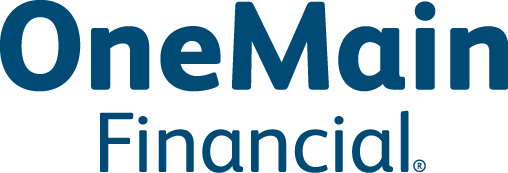
Credible Rating>
Credible lender ratings are evaluated by our editorial team with the help of our loan operations team. The rating criteria for lenders encompass 78 data points spanning interest rates, loan terms, eligibility requirement transparency, repayment options, fees, discounts, customer service, cosigner options, and more. Read our full methodology.
View details>
18.0% – 35.99% APR$1,500 to $20,000None2, 3, 4, 5Fixed APR:
18.0% – 35.99% APRMin. credit score:
NoneLoan amount:
$1,500 to $20,000Loan terms (years):
2, 3, 4, 5Time to fund:
As soon as the same day, but usually requires a visit to a branch officeFees:
Origination feeDiscounts:
NoneEligibility:
Must have photo I.D. issued by U.S. federal, state or local governmentCustomer service:
Phone, emailSoft credit check:
YesMin. Income:
Does not disclose

Credible Rating>
Credible lender ratings are evaluated by our editorial team with the help of our loan operations team. The rating criteria for lenders encompass 78 data points spanning interest rates, loan terms, eligibility requirement transparency, repayment options, fees, discounts, customer service, cosigner options, and more. Read our full methodology.
View details>
5.99% – 24.99% APR$5,000 to $40,0006002, 3, 4, 5Fixed APR:
5.99% – 24.99% APRMin. credit score:
600Loan amount:
$5,000 to $40,000Loan terms (years):
2, 3, 4, 5Time to fund:
As soon as 2 – 5 business days after verificationFees:
Origination feeDiscounts:
NoneEligibility:
Available in all states except MA, NV, and OHCustomer service:
Phone, email, chatSoft credit check:
YesMin. Income:
NoneLoan Uses:
Debt consolidation and credit card consolidation only

Credible Rating>
Credible lender ratings are evaluated by our editorial team with the help of our loan operations team. The rating criteria for lenders encompass 78 data points spanning interest rates, loan terms, eligibility requirement transparency, repayment options, fees, discounts, customer service, cosigner options, and more. Read our full methodology.
View details>
5.99% – 17.99% APR$600 to $50,000
(depending on loan term)6701, 2, 3, 4, 5Fixed APR:
5.99% – 17.99% APRMin. credit score:
670Loan amount:
$600 to $50,000*Loan terms (years):
1, 2, 3, 4, 5Time to fund:
2 to 4 business days after verificationFees:
NoneDiscounts:
NoneEligibility:
Does not discloseCustomer service:
Phone, emailSoft credit check:
NoMin. Income:
Does not discloseLoan Uses:
Debt consolidation, home improvement, transportation, medical, dental, life events

Credible Rating>
Credible lender ratings are evaluated by our editorial team with the help of our loan operations team. The rating criteria for lenders encompass 78 data points spanning interest rates, loan terms, eligibility requirement transparency, repayment options, fees, discounts, customer service, cosigner options, and more. Read our full methodology.
View details>
6.95% – 35.99% APR$2,000 to $40,0006403, 5Fixed APR:
6.95% – 35.99% APRMin. credit score:
640Loan amount:
$2,000 to $40,000Loan terms (years):
3, 5Time to fund:
As soon as one business dayFees:
Origination feeDiscounts:
NoneEligibility:
Available in all states except IA, ND, WVCustomer service:
Phone, emailSoft credit check:
YesMin. Income:
NoneLoan Uses:
Debt consolidation, home improvement, vehicles, small business, new baby expenses, and other purposes

Credible Rating>
Credible lender ratings are evaluated by our editorial team with the help of our loan operations team. The rating criteria for lenders encompass 78 data points spanning interest rates, loan terms, eligibility requirement transparency, repayment options, fees, discounts, customer service, cosigner options, and more. Read our full methodology.
View details>
5.99% – 18.83% APR$5,000 to $100,000Does not disclose2, 3, 4, 5, 6, 7Fixed APR:
5.99% – 18.83% APRMin. credit score:
Does not discloseLoan amount:
$5,000 to $100,000Loan terms (years):
2, 3, 4, 5, 6, 7Time to fund:
3 business daysFees:
NoneDiscounts:
AutopayEligibility:
Available in all states except MSCustomer service:
Phone, emailSoft credit check:
YesMin. Income:
Does not discloseLoan Uses:
Solely for personal, family, or household uses

Credible Rating>
Credible lender ratings are evaluated by our editorial team with the help of our loan operations team. The rating criteria for lenders encompass 78 data points spanning interest rates, loan terms, eligibility requirement transparency, repayment options, fees, discounts, customer service, cosigner options, and more. Read our full methodology.
View details>
8.93% – 35.93% APR7$1,000 to $20,0005603, 5Fixed APR:
8.93% – 35.93% APR7Min. credit score:
560Loan amount:
$1,000 to $50,000Loan terms:
3 to 5 years 8Time to fund:
Within one day, once approved9Loan types:
Debt consolidation, pay off credit cards, home improvements, unexpected expenses, home and auto repairs, weddings, and other major purchasesFees:
Origination feeDiscounts:
AutopayEligibility:
A U.S. citizen or permanent resident; not available in DC, SC, WVCustomer service:
Phone, emailSoft credit check:
Yes

Credible Rating>
Credible lender ratings are evaluated by our editorial team with the help of our loan operations team. The rating criteria for lenders encompass 78 data points spanning interest rates, loan terms, eligibility requirement transparency, repayment options, fees, discounts, customer service, cosigner options, and more. Read our full methodology.
View details>
5.94% – 35.97% APR$1,000 to $50,0005602, 3, 5, 6Fixed APR:
5.94% – 35.97% APRMin. credit score:
560Loan amount:
$1,000 to $50,000*Loan terms (years):
2, 3, 5, 6Time to fund:
Within a day of clearing necessary verificationsFees:
Origination feeDiscounts:
AutopayEligibility:
Available in all states except West VirginiaCustomer service:
EmailSoft credit check:
YesMin. Income:
Does not discloseLoan Uses:
Debt consolidation, credit card refinancing, home improvement, and other purposes

Credible Rating>
Credible lender ratings are evaluated by our editorial team with the help of our loan operations team. The rating criteria for lenders encompass 78 data points spanning interest rates, loan terms, eligibility requirement transparency, repayment options, fees, discounts, customer service, cosigner options, and more. Read our full methodology.
View details>
6.46% – 35.99% APR4$1,000 to $50,00055803 to 5 years4Fixed APR:
6.46% – 35.99% APR4Min. credit score:
580Loan amount:
$1,000 to $50,0005Loan terms (years):
3 to 5 years4Time to fund:
As fast as 1 business day6Fees:
Origination feeDiscounts:
NoneEligibility:
Available in all 50 statesCustomer service:
Phone, emailSoft credit check:
YesMin. Income:
$12,000Loan Uses:
Payoff credit cards, consolidate debt, take a course or bootcamp, relocate, make a large purchase, and other purposesCompare rates from these lenders without affecting your credit score. 100% free!
Compare Now
Trustpilot
All APRs reflect autopay and loyalty discounts where available | LightStream disclosure | Read more about Rates and Terms
Use a balance transfer card
Best if: You plan to pay off your balance quickly.
Another option for consolidating credit card debt is a balance transfer. This process lets you move your balance from one credit card to another.
Some balance transfer cards come with a 0% APR introductory offer, which means you could avoid paying interest if you can repay your debt before this period ends — usually within nine to 21 months, depending on the card.
However, if you can’t pay off your debt in time, you could stick with some hefty interest charges.
Pros
0% APR offer: Depending on the card you choose, you might be able to take advantage of a 0% APR introductory period and avoid paying interest for a certain period of time. This could be especially helpful if you plan to repay your balance quickly.Could help establish credit history: If you keep the balance transfer card open after paying off your initial debt, you can continue to use it to build your positive payment history and improve your credit.Might offer rewards or other perks: Some balance transfer cards provide various rewards or perks, such as cash back or travel points.
Cons
Might come with fees: In many cases, you’ll have to pay a balance transfer fee. This can range from 3% to 5% of the balance you want to transfer.Could come with high interest charges: If you don’t choose a card with a 0% APR introductory offer or can’t pay off your balance before this period ends, you could end up paying a large amount of interest.Might lead to further debt: Although a balance transfer card could help you manage your debt, it’s still another credit card — for some borrowers, it might be tempting to rack up a balance again.
Learn More: Refinancing Credit Card Debt and Getting Approved: Guide
Tap into your home’s equity
Best if: You own a home with at least 15% to 20% equity.
If you’re a homeowner, you might be able to tap into your home’s equity with a home equity loan or home equity line of credit (HELOC) and use the funds to consolidate your credit card debt.
With a home equity loan, you’ll get a lump sum that you can use how you wish.With a HELOC, you’ll have access to a revolving credit line that you can repeatedly draw on and pay off.
Because these loans are secured by your home, they often come with lower interest rates compared to credit cards or personal loans.
However, keep in mind that if you can’t keep up with your payments, you risk losing your house.
Pros
Lower interest rates: Because there’s less risk to the lender, home equity loans and HELOCs tend to have lower interest rates than credit cards or personal loans.Long repayment term: You could have five to 30 years to repay a home equity loan or up to 20 years to pay off a HELOC.Can use funds for any purpose: You can use the funds from a home equity loan or HELOC for almost any purpose. This could be helpful if you have other expenses to cover in addition to your credit card debt.
Cons
Risk of foreclosure: If you can’t make your payments on a home equity loan or HELOC, the lender could seize your home.Closing costs: Home equity loans and HELOCs can come with similar closing costs as a traditional mortgage — often 2% to 5%.Longer process: Depending on the complexity of the loan, it could take a few weeks for your loan to be processed and funded.
Check Out: Home Equity Loan vs. Personal Loan: Which Is Right for You?
2. Work with your credit card company
In some cases, you might be able to work out an arrangement with your credit card company that could help you tackle your debt. Here are a few options to consider:
sk your credit card company about a hardship plan
Best if: Your account is in good standing.
If your credit card payments are becoming too difficult to manage, it’s a good idea to call your card company to see if any assistance is available to you.
For example, several credit card companies offer hardship plans, which often provide a lower interest rate, reduced monthly payments, and lower fees.
Generally, credit card companies prefer to work with long-time customers who haven’t missed any payments. If you think you might not be able to make a payment, be sure to reach out to your card issuer as soon as possible.
Pros
Could lower your interest rate: A hardship plan could temporarily provide more optimal terms, such as a lower interest rate.Fixed repayment: Hardship plans usually come with fixed repayment schedules, which could make it easier to budget for your payments.Maintain good standing: If you reach out to your credit card company before you miss any payments, you’ll have a better chance of keeping your account in good standing with the company.
Cons
Might hurt your credit: Your card issuer might suspend or close your account for the duration of the hardship plan, which could lead to a decrease in your credit score.Could make it hard to access more credit: If your card issuer reports your hardship plan to the credit bureaus, you might have a harder time qualifying for other loans and credit in the future.Can’t combine multiple cards: If you have debt on multiple credit cards and want to sign up for a hardship plan, you’ll need to contact each card issuer individually.
Learn More: Coronavirus Hardship Loans: 7 Options to Consider
Try to negotiate a debt settlement
Best if: You have a sum of cash that you can use to negotiate a settlement for less than what you owe.
Debt settlement is an arrangement where your credit card company agrees to accept a lump sum or number of payments for less than what you owe in order to settle the account.
You can approach your creditor to discuss settlement on your own, or you could involve one of the several for-profit companies that offer debt settlement services.
Keep in mind: For-profit debt settlement companies often ask you to stop making payments on your accounts while they negotiate with your creditors, which could severely damage your credit.
Pros
Might be able to pay off your debt for less than what you owe: If your card issuer accepts the debt settlement plan, you could pay off your debt for less than what you actually owe.Can be done on your own: While there are several companies that could help you pursue debt settlement, you also have the option to work with your card issuer on your own.Could help you avoid bankruptcy: If you don’t want to file for bankruptcy, debt settlement might be a helpful option.
Cons
Could damage your credit: Your credit report will reflect that you settled an account for less than what you owed, which could hurt your credit. Your credit could also be damaged if you work with a for-profit company and agree to stop making payments.Potential fees: Debt settlement companies usually charge a fee for their services ranging from 20% to 25% of your final settlement amount.Might not work: There’s no guarantee that your card issuer will accept the settlement offer.
Check Out: How to Get Out of Credit Card Debt
Consider a debt management plan
Best if: You want professional guidance on the best way to repay your debt.
If you’re not sure how to tackle your debt, signing up for a debt management plan might be a good idea. With this option, a nonprofit debt counseling agency — such as the National Foundation for Credit Counseling — will help you come to an agreement with your creditors.
Debt management plans typically last for three to five years until your debt is paid off. During this time, you’ll make your payments to the agency, which will send the agreed-upon amounts to your creditors.
Pros
Professional help to manage your debt: Credit counselors offer a variety of resources and educational tools to help you take control of your debt and create good credit habits.Might come with lower interest rate and fees: Your creditors might agree to lower your interest rates and reduce or waive fees if you sign up for a debt management plan.Could improve your credit score: Making on-time payments under a debt management plan could help you build a positive payment history and improve your credit score over time.
Cons
Might close your credit cards: Any credit cards included in a debt management plan will likely have to be closed, meaning you’ll have less access to credit. Additionally, you might not be permitted to apply for new credit for the duration of the plan.Could come with fees: Depending on the agency you choose, you might have to pay upfront and monthly fees.Will have to pay off your debt in full: Unlike with a debt settlement, you’ll have to pay off your full balance on a debt management plan.Tip: Under a debt management plan, you’ll make just one monthly payment — similar to debt consolidation. However, you won’t necessarily be able to get a lower interest rate.
If you have good credit and can qualify for a lower interest rate on a personal loan, consolidating your debt might be a better option if you’re looking to save money on your debt.
Just remember to consider how much a personal loan will cost you before you borrow so you can be prepared for any added expenses.
You can estimate how much you’ll pay for a loan using our personal loan calculator below.
Enter your loan information to calculate how much you could pay
Loan amountEnter the total amount borrowedInterest rateEnter your annual interest rateorLoan termEnter the amount of time you have to repay your loanyears
Total Payment>
Total Interest>
Monthly Payment>
With a>
loan, you will pay>
monthly and a total of>
in interest over the life of your loan. You will pay a total of>
over the life of the
loan.
Need a personal loan?
Compare rates without affecting your credit score. 100% free!
Check Personalized Rates
Checking rates won’t affect your credit score.
3. Choose a debt payoff strategy
If you have multiple cards to pay off, choosing a debt payoff strategy could be helpful. Here are a couple of methods to consider:
Use the debt avalanche method
Best if: You’re motivated by long-term interest savings.
With the debt avalanche method, you’ll focus on paying off your debt with the highest interest rate first.
Here’s how it works:
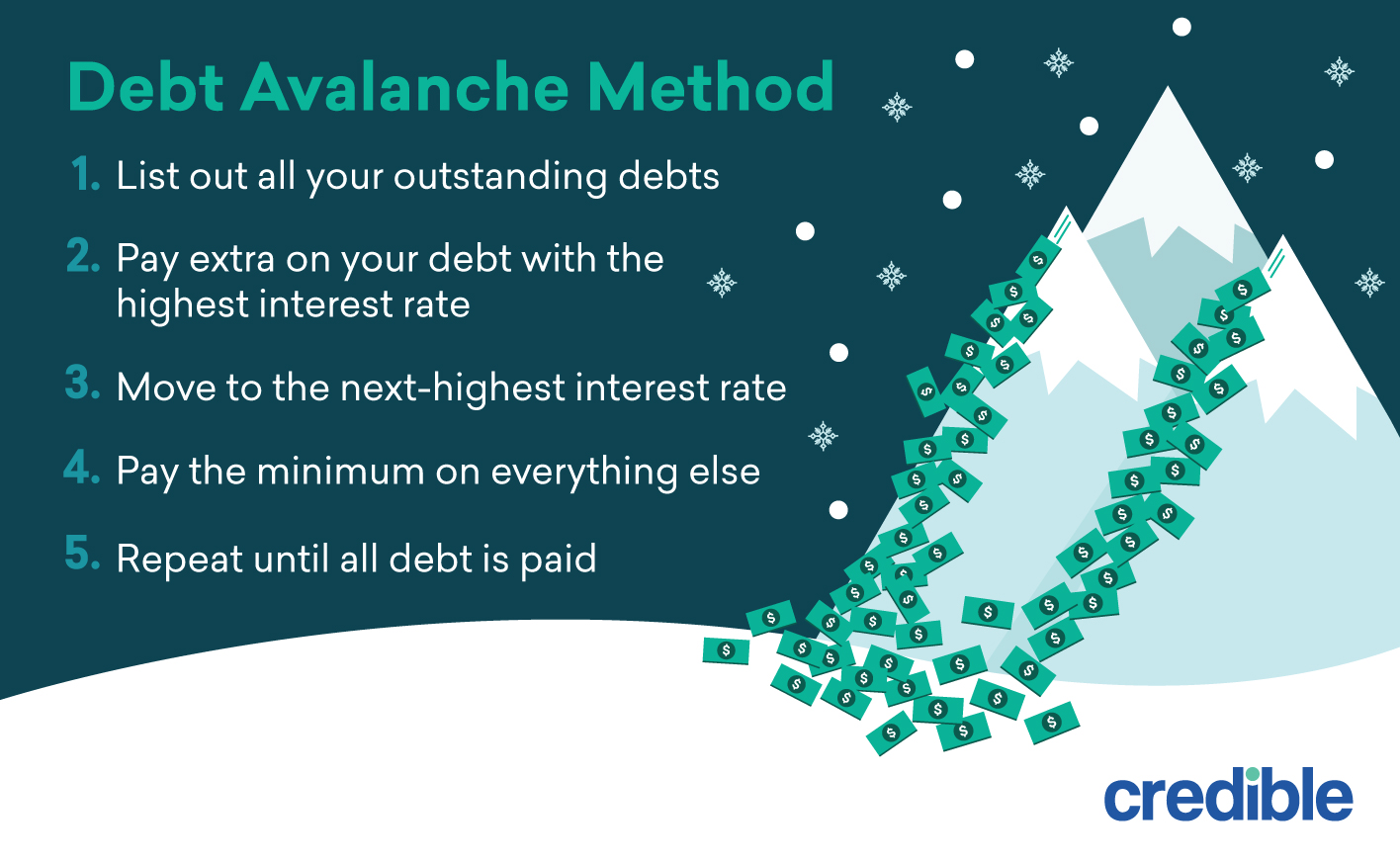
Pros
Could save money on interest: Paying down your highest-interest debt first could help you reduce your overall interest charges.Might get out of debt faster: Saving money on interest might help you pay off your debt ahead of schedule.
Cons
Could take longer to see results: While paying down your highest-interest debt might help you save money on interest, it could take a while to see any significant results.Might be hard to sustain motivation: If you need to enjoy small wins to maintain motivation, you might have a hard time sticking to the debt avalanche method.
Learn More: How to Consolidate Bills Into One Payment
Use the debt snowball method
Best if: You’re motivated by small wins.
If you choose the debt snowball method, you’ll concentrate on repaying your smallest debt first. Here’s how it works:
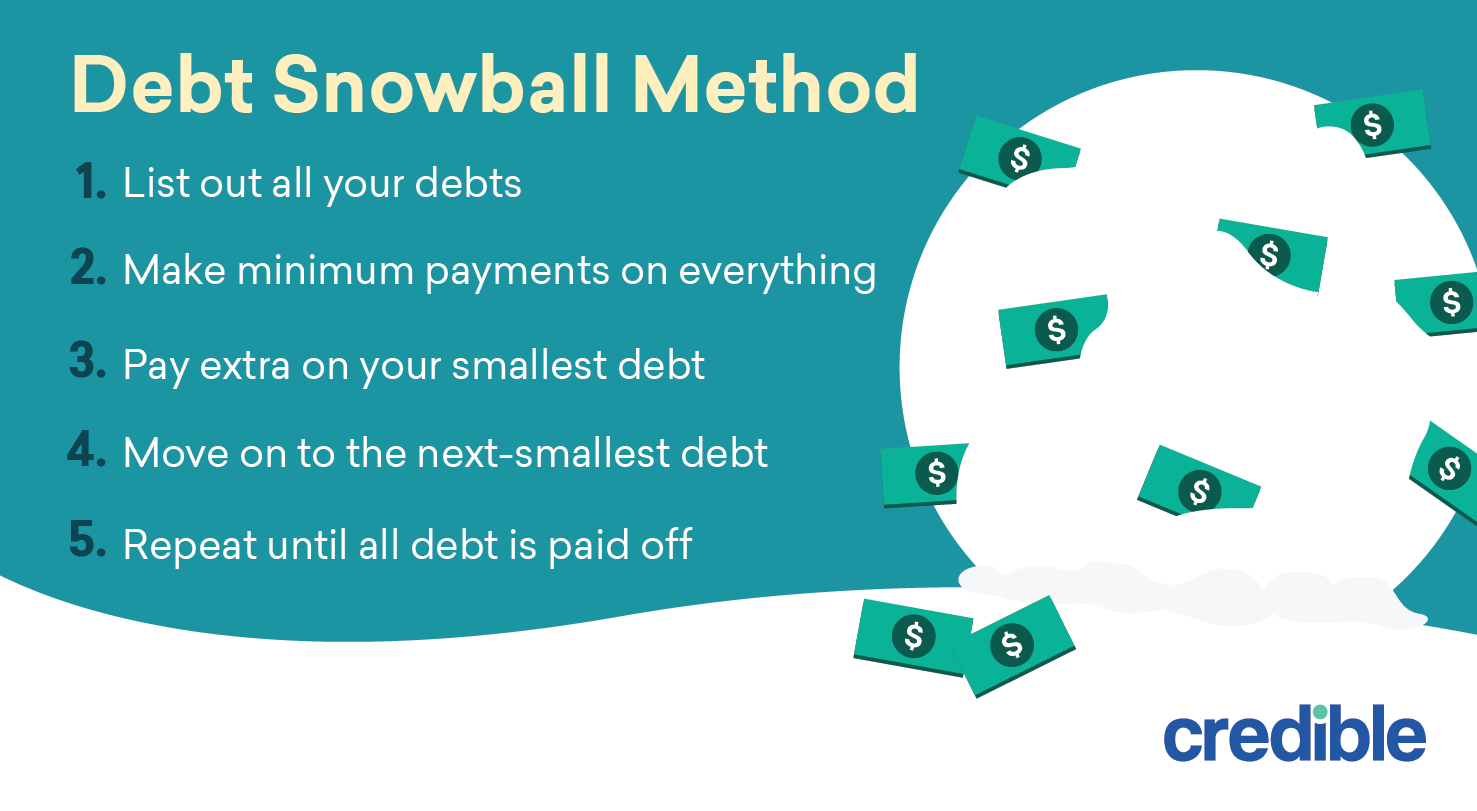
Pros
Faster results: You’ll likely see quicker results with the debt snowball method compared to the debt avalanche.Could help maintain motivation: Because you’ll be paying off balances sooner with the debt snowball, it could be easier to stay motivated.
Cons
Won’t save as much on interest: The debt snowball method generally doesn’t offer the same amount of interest savings as the debt avalanche.Could take longer: Because you won’t be saving much money on interest, it will likely take longer to fully repay your debt using the debt snowball method.
Check Out: Are Interest-Free Loans Really Interest-Free?
4. Reevaluate your current spending
Establishing a financial plan that prioritizes paying off debt could also help you tackle a $10,000 credit card balance. Here are a few strategies that could help:
Create (or update) your budget
Creating a budget is a good way to keep track of your income as well as your expenses. It can also help you plan for your financial goals — such as paying off your credit card debt.
To set up a budget focused on debt payoff:
Calculate your monthly income.Calculate your monthly expenses.Subtract your expenses from your income — this amount is what you can afford to put toward your debt.
Cut out the non-essentials
As you list out your monthly expenses, consider what you might be able to cut. For example, maybe you could unsubscribe from a streaming service you hardly use. Or you might start cooking at home to save money on dining out.
Tip: By reducing your spending, you’ll have more room in your budget to focus on paying off your credit card debt.
Sell your stuff
Many of us have unused items lying around the house that could be sold for extra cash. For example, you might consider selling electronics, furniture, or books.
Tip: If you don’t have anything to sell, you could consider purchasing items for cheap on a marketplace, upcycling them, and reselling for a profit.
Find a side hustle
After reviewing your budget, you might find that you don’t have much extra cash to put toward debt. In this case, you might think about starting a side hustle to earn more money.
For example, you could:
Drive for a ridesharing business, such as Uber or LyftDeliver food through DoorDash or UberEatsOffer freelance services, such as writing or consultingTutor local students
Frequently asked questions
Here are the answers to a few commonly asked questions about paying off credit card debt:
What is the monthly payment on a $10,000 loan?
The monthly payment on a $10,000 loan will depend on:
Interest rate: You’ll generally need good to excellent credit to qualify for the lowest available interest rates. The higher your interest rate, the more you’ll pay monthly as well as over the life of the loan.Repayment term: Personal loans typically come with a term ranging from one to seven years, depending on the lender. Choosing a longer term will likely get you a lower monthly payment — but it also means you’ll pay more in interest over time. It’s usually a good idea to choose the shortest term you can afford to keep your interest costs as low as possible.For example: Say you take out a $10,000 debt consolidation loan with a 10% interest rate and a five-year term. With these terms, you’d end up paying $323 a month with a total repayment cost of $11,616.
If you qualified for a 7% interest rate and chose a three-year term instead, you’d have a monthly payment of $309 and a total repayment cost of $11,115.
Is it smart to pay off one credit card with another?
You typically can’t use a credit card to make payments on another card. However, you can move your balance from one card to another with a balance transfer.
If you can qualify for a balance transfer card with a 0% APR introductory offer and can repay your balance before this period ends, then it could be a good way to save money on interest. But if you wouldn’t be able to pay off the card in time, you might be better off keeping your balances where they are.
How much credit card debt is OK to have?
Whether or not you have too much credit card debt depends on a couple of factors:
Monthly income: Having monthly debt payments that take up a large portion of your income can make debt unmanageable and saving for other goals impossible. It’s generally advised that monthly debt payments in total take up no more than 36% of your monthly income.Credit utilization: One of the major components of your credit score is your credit utilization ratio — the amount you owe on revolving credit lines (like credit cards) compared to your total credit limits. Using a high percentage of your available credit could have a negative impact on your credit. It’s typically a good idea to keep your credit utilization ratio under 30%.
If you decide to take out a personal loan to consolidate your credit card debt, remember to consider as many lenders as you can to find the right loan for you.
This is easy with Credible: You can compare your prequalified rates from multiple lenders in two minutes — without affecting your credit.
Ready to find your personal loan?
Credible makes it easy to find the right loan for you.
Free to use, no hidden feesOne simple form, easy to fill out and your info is protectedMore options, pick the loan option that best fits your personal needsHere for you. Our team is here to help you reach your financial goalsFind My Rate
Checking rates won’t affect your credit
Trustpilot
The post How to Pay Off $10,000 in Credit Card Debt appeared first on Credible.
16 Fast Weekend Projects to Boost Your Home’s Curb Appeal
Taking on projects to boost your home’s curb appeal can give you a great sense of satisfaction and boost your mood every time you see your completed work.
Here are 16 projects that aren’t expensive or time-consuming — and that you can often do yourself:
Sweep the front porchGet a new front porch matHang a decorative wreathAdd potted plants to your front porchHide your hoseEliminate weedsAdd natural mulchReplace light fixturesClean, touch up, or completely repaint your front doorClean and polish or change front door hardwarePrune flowers and shrubsPressure wash your concreteHire a tree trimmerEmbellish your garage doorStyle your mailboxAttach house numbers

1. Sweep the front porch
The fastest, cheapest thing you can do to boost your home’s curb appeal is to get out a broom and dustpan and sweep your front porch.
You’ve probably become oblivious to the dead leaves and dirt that have accumulated there, so cleaning up will make an instant difference. Everyone who walks up to your front door is sure to notice.

2. Get a new front porch mat
Now that you’ve got a clean front porch, the next simplest way to spruce it up is with a new porch mat. Chances are, you either don’t have one at all, or you have an old one that’s looking ratty.
Hit up a big box store for a simple mat or outdoor rug you can use year-round. Buy a seasonally themed mat from virtually any home goods vendor. Or order something customized from a creator on Etsy.
If you need cash for a major home improvement project, consider a cash-out refinance. Credible can help you find a great refinance rate from our partner lenders in just a few minutes — checking rates with us is free, secure, and won’t affect your credit score.
Get the cash you need and the rate you deserve
Compare lendersGet cash out to pay for home improvementsPrequalify in just 3 minutesFind My Loan
No annoying calls or emails from lenders!
Trustpilot

3. Hang a decorative wreath
If you want to dress up your front door, try a wreath! You don’t have to hammer a nail into the door to hang it, either. You can use a temporary adhesive hook or an over-the-door hanger.
Choose from holiday-specific wreaths (like Halloween or Easter), seasonal wreaths to celebrate fall or spring, or year-round wreaths that look good all the time.
Front door signs, hung on the door or propped next to it, are also a simple and affordable way to make your front entrance more inviting.
Don’t Miss: 8 Popular Pandemic Home Renovations to Transform Your Space

4. Add potted plants to your front porch
Even the smallest front porch usually has room for a potted plant or two. You might go for a vibrant magenta Tradescantia zebrina or a classic green fern. Consider how much sun the plants will get: You might need shade-loving varieties. Also, keep pet safety in mind.
If you purchase plants from your local nursery, you’re almost guaranteed to get something that’s well-suited to the season and climate, but for a wider selection, you can order plants online.
Tip: If your gardening skills are nonexistent, consider a high-quality artificial plant. You might be surprised by how realistic they can look!

5. Hide your hose
Many of us have a hose in front of our house that we don’t put away because we use it so often. As convenient as this is, some form of hose storage will eliminate the visual clutter of an uncoiled hose.
If you have the right power tools, you can mount a hose holder to a wall, but if you don’t want to drill holes into your home — or you’re looking for an easier project — a hose pot will also work.
One free, temporary fix is to just unscrew your hose from the faucet and store it in the garage. This can be a good option if you just want to impress guests in the short term and aren’t looking for a long-term solution.

6. Eliminate weeds
Weeds are another nuisance that you might have stopped noticing if you see them day after day. Pulling them can be a ton of work, and it won’t work long-term unless you get all the roots out.
There are, however, natural ways to kill weeds using substances you already have around the house. Vinegar, salt, and dish soap can help you kill unwanted plants. Check online for DIY recipes and application tips.
For weeds in your lawn, adjusting your watering and mowing patterns can also help limit weed growth going forward.

7. Add natural mulch
In flower beds and gardens, a thick layer of mulch will help prevent those weeds you just pulled from growing back. Mulch’s sunlight-blocking power also retains soil moisture so you can water less and keep your plants healthy.
You’ll want to do a bit of research to determine the best kind of mulch for your plants and climate, how close to your trees and plants it can be, and which types of mulch are the safest for people and pets.

8. Replace light fixtures
Replacing your old exterior light fixtures with more modern ones can help update your home’s look. It involves some electrical work, so you may want to hire an electrician. However, if you’re comfortable learning basic electrical safety, reading instructions, and watching a few videos, replacing light fixtures can be an easy DIY job.
For an extra-fun change, use smart light bulbs in your new fixtures. You can control these via WiFi and change their color and brightness with your smartphone.

9. Clean, touch up, or completely repaint your front door
Your front door will get dirty and fade over time since it’s exposed to the elements 24/7. Sometimes, just cleaning it with a wet rag will make a big difference, but other times, your door will need a paint job to look its best.
Painting your front door a bright color that complements the other colors in your home’s exterior can make your home stand out in a good way — and potentially raise your home’s value.
The ideal way to do the job will involve removing the door and hardware, filling and sanding any cracks, painting, then reinstalling the door. But you can also paint it in place by taping off the hardware and putting down a drop cloth to prevent paint drips and spills from marring your porch.

10. Clean and polish or change front door hardware
So many things in our homes can look like they need replacement because we’ve never cleaned them properly, and door hardware definitely falls into that category. The solution is sometimes as simple as a dish soap and water mixture.
For problems that go beyond surface dirt, you’ll need to know what material the doorknob is made of. Coated or plated hardware can require different cleaning approaches than solid metal. If your door hardware has corroded due to factors like humidity or salt air, replacing it is probably the best.
Keep Reading: 10 Ways to Craft an Elegant Outdoor Space

11. Prune flowers and shrubs
You should be able to improve your curb appeal by pruning away the dead parts of your flowers, shrubs, and hedges. If you can reshape them, even better!
You might also need to pull out plants that are beyond recovery and add new ones. Planting new flowers in full bloom is a great way to quickly add color to your landscape.

12. Pressure wash your concrete
To get stains and mildew out of the hard surfaces around your home, like your patio and driveway, try pressure washing. With the right detergents and degreasers, you can remove years of grime. Best of all, it’s one of those home improvement projects you can wrap up in a day.
You can borrow a pressure washer from a neighbor or rent one from a home improvement store. Carefully follow the instructions so you don’t hurt yourself. Also, certain materials can be damaged by pressure washing, so do your research first, or hire a professional.

13. Hire a tree trimmer
Having your trees professionally trimmed can make a big difference in your curb appeal.
An arborist will know how to shape your trees to make them look their best. They can also keep your trees healthy by thinning enough branches to improve air circulation and treating any problems that might be weakening your trees.
Besides, it’s a good idea to identify trees or limbs that could be in danger of falling in a storm, then take care of them promptly. A house that’s been partially crushed by a tree is not a pretty sight.

14. Embellish your garage door
If you have a traditional raised-panel garage door, you can add decorative or “dummy” hardware to make it more attractive. These handles and hinges don’t serve any functional purpose, but do add visual interest. There are also kits that allow you to add simulated windows.
Give your door a carriage style, mid-century modern, or contemporary look to go with the rest of your home. Just make sure to install the embellishments in a way that won’t affect the door’s ability to open and close smoothly.

15. Style your mailbox
A professional might be able to build you a custom stone mailbox in a weekend, but for a more affordable DIY upgrade, you have a few options.
If you have a metal mailbox, try cleaning it and spray painting it. You can also order decals, letters, and numbers to customize your mailbox. Or perhaps landscape your mailbox by adding plants and flowers around it.
Keep in mind that you’ll need to prune them periodically, and you may not want to plant anything that attracts lots of bees (like lavender) so you don’t have to worry about getting stung when you check the mail.

16. Attach house numbers
You can make sure your address is prominently displayed on your house by replacing old house numbers or installing new ones. This is also a way to ensure that emergency services can locate your home and that someone else’s packages don’t get dropped on your doorstep. Kits are available online in all different styles.
Boosting your curb appeal is a great way to get more money when selling your home. But even if you’re not selling, sprucing up your home’s exterior will increase your pride of ownership and create a more welcoming experience for your guests. And once you see the results of your first project, you’ll probably feel inspired to do even more.
Shopping around for a home loan can be stressful. Fortunately, Credible simplifies this process and makes comparing multiple lenders easy. You can see prequalified refinance rates from our partner lenders in just a few minutes.
window.credibleAsyncInit = function() {
CredibleSDK.initWidget(‘#credible-rate-table’, {
environment: ‘production’,
product: {
marketplace: ‘mortgage-combined’,
type: ‘rate-table’,
variation: ‘shortened’,
loantype: ‘refinance’,
},
analytics: {
source: ‘credible_blog’,
},
});
CredibleSDK.initWidget(‘#mortgage-combined-rate-widget-simple’, {
environment: ‘production’,
product: {
marketplace: ‘mortgage-combined’,
type: ‘rate-widget’,
variation: ‘simple’,
},
analytics: {
source: ‘credible_blog’,>
The post 16 Fast Weekend Projects to Boost Your Home’s Curb Appeal appeared first on Credible.
Did you miss our previous article…
https://www.coloradomicrofinance.org/?p=219
What Happens to Your Mortgage When You Die?

One important aspect of estate planning is deciding what will happen to your home after you die. The answer might be fairly cut and dry if the home is fully paid for. If it’s not, though, you’ll need to consider the financial ramifications for your estate and for the person who inherits the home.
Here’s what happens to your mortgage when you die:
Who assumes a mortgage after my death?How to take over the mortgage of an inherited housePlanning ahead
Who assumes a mortgage after my death?
No one automatically assumes your mortgage after your death. Your estate executor (i.e., the person you appoint to carry out your will and manage your estate after you die) or administrator (i.e., the person a court appoints to fulfill those same duties) will continue to make payments using funds from the estate while everything is being settled.
Later, the individual who inherits the home might be able to assume the loan.
Good to know: If you’re a co-borrower or cosigner with the decedent, you don’t have to do anything to take over the mortgage because you’re already responsible for paying it. You’ll simply continue the payments. However, you should contact the mortgage servicer to inform them of the decedent’s death.
How to take over the mortgage of an inherited house
Mortgage loans have a due-on-sale clause, also called an acceleration clause, that requires the loan to be paid in full if it transfers to a new owner. However, federal law prohibits lenders from accelerating a loan in the event of a borrower’s death. Individuals who acquire ownership this way are considered “successors in interest,” and lenders must treat them as if they were the borrower.
The law allows a successor in interest to assume the loan, without having to apply or qualify, and continue making the payments. You’re also entitled to modify the mortgage to avoid foreclosure if you wish to keep the home.
What are my options as the heir of a home with a mortgage?
In the event you inherit a mortgaged home, you have several options. Which one is best depends on your personal preferences and your financial situation.
If you want to keep the house, you can:
Assume the mortgage: Federal law allows heirs to assume a decedent’s mortgage loan in many cases. As long as you’re a qualified successor in interest — someone who inherited or otherwise acquired ownership as a result of the homeowner’s death — you can take over the loan once the deed is signed over to you. The law also entitles you to modify the loan if you’re not financially capable of making the payments.Refinance the mortgage loan: You can also refinance the mortgage into a new mortgage loan as soon as the deed is signed over to you. You’ll have to apply for the loan, qualify based on your own creditworthiness, and pay any closing costs. However, refinancing could result in a lower interest rate or an extension of the time to pay off the loan — either of which can make the home more affordable.Repay the loan in full: Assuming you have the cash on hand, you can avoid mortgage issues entirely by paying the balance in full. The home would then be yours free and clear.
If you can’t or don’t want to keep the house, you can:
Sell it: The home is yours as soon as the deed has been transferred to you, so you can list it for sale just like you would a home you’d purchased yourself.Let the lender foreclose: If you don’t want the house and don’t want to sell it — a reasonable decision if you’re unlikely to sell at a profit — you can simply take no action. After a period of time with no payments, the lender will foreclose and repossess the home.
Important: Foreclosure can have tax consequences for the estate. Contact an accountant or attorney before going this route.
What happens to a reverse mortgage when you die?
The rules change when you inherit a home from someone other than a spouse with whom you are a co-borrower on the home’s reverse mortgage.
A reverse mortgage allows older homeowners to access the existing equity from their home. These loans don’t have to be paid back unless the borrower and their co-borrower spouse both die or move out of the home.
If you inherit a property with a reverse mortgage, you have the option of selling or keeping the home. The loan is not assumable, but you can keep the house by doing one of two things: paying off the balance or paying 95% of the home’s value, whichever is less.
Similarly, if you decide to sell the home, you’ll use the sale proceeds to pay off the debt owed on the loan — or an amount that’s at least 95% of the home’s value — and then pocket the remaining proceeds.
Planning ahead
A crucial step in estate planning is drafting a will detailing how you want your estate handled after you die, along with who you want to serve as the estate executor. In the event you die intestate — without a will — the court will appoint an administrator to take on that role.
When planning to bequeath a mortgaged home, it’s important that you disclose the mortgage to your executor and close relatives — otherwise they won’t know to make payments, and the home could be lost to foreclosure inadvertently.
In addition, consider whether the individual who inherits your home will be able to afford mortgage payments and upkeep. An estate or financial planner can help you devise a strategy to keep your gift from becoming a burden to your loved ones.
Compare your home loan options
Credible is a mortgage marketplace that allows you to easily compare rates and loan options. With Credible, you can secure a streamlined pre-approval letter and see loan details from all of our partner lenders in just a few minutes. We also provide transparency into lender fees that other brokers typically don’t.
Credible makes getting a mortgage easy
Instant streamlined pre-approval: It only takes 3 minutes to see if you qualify for an instant streamlined pre-approval letter, without affecting your credit.We keep your data private: Compare rates from multiple lenders without your data being sold or getting spammed.A modern approach to mortgages: Complete your mortgage online with bank integrations and automatic updates. Talk to a loan officer only if you want to.Find Rates Now
Trustpilot
The post What Happens to Your Mortgage When You Die? appeared first on Credible.
Did you miss our previous article…
https://www.coloradomicrofinance.org/?p=218
4 Steps to Becoming Finance Fit
Due to the COVID-19 pandemic, payments and interest accrual have been paused on federal student loans by the CARES Act through Jan. 31, 2022.
If you have federal student loans, this means you only have a short time until your payments resume — which is why it’s important to get your finances in shape so you’ll be prepared.
Are you ready to start making federal student loan payments again? Take the quiz below to find out — plus get the chance to win a $50 e-gift card*!
Find Out If You’re Financially Fit
NO PURCHASE NECESSARY TO ENTER OR WIN. The Financially Fit Survey Sweepstakes begins on Oct. 5, 2021 at 12:01 a.m. PT and ends on Oct. 19, 2021 at 11:59 p.m. PT. Open to legal residents of the 50 United States & D.C., who are at least 18 years of age at time of entry. One entry per user. Void where restricted or prohibited by law. See Official Rules for eligibility/ restrictions/ Entry Periods/ prize descriptions and complete details. Void where prohibited. Privacy Policy is located at https://www.credible.com/privacy.
Here are four ways to get financially fit before you start making federal student loan payments again:
Create a budgetRefinance high-interest debtPay down high-interest debtBuild an emergency fund
1. Create a budget
Creating a budget is a great way to track your monthly income and expenses. Additionally, you can see how federal student loan payments will fit into your current budget and make adjustments if necessary.
For example, if your payments will strain your budget, you can look into trimming expenses, such as canceling unused subscriptions.
To set up a budget, you’ll need to:
Calculate your monthly income. This might include traditional employment as well as other non-traditional sources, such as a side hustle.Calculate your monthly expenses. List out your essential expenses (such as rent and utilities) as well as your non-essential spending (such as entertainment or dining out).Subtract your expenses from your income. This amount is the extra room you have in your budget — as well as how much you can afford to pay on your student loans.Tip: Creating a budget can also help you plan for your short-term and long-term financial goals.
For instance, if you want to pay off your student loans in five years, you can check your budget to see how much you can afford to pay on your loans each month and then set a payoff date.
2. Refinance high-interest debt
If you have high-interest debt, you might be able to get a lower interest rate through refinancing. This could save you hundreds or even thousands of dollars on interest — freeing up money in your budget to put toward your student loans.
Or you could opt to extend your repayment term to reduce your monthly payments. Just keep in mind that this means you’ll pay more in interest over time.
Here are a few ways to refinance depending on the kind of debt you have:
Student loan refinancing
Student loan refinancing interest rates are hovering near record lows. If you have private student loans as well as good to excellent credit, you might be able to take advantage of these low rates by refinancing your student loans.
This could save you money on interest and even potentially help you pay off your loans faster.
Keep in mind: While you can refinance both federal and private loans, refinancing federal student loans will cost you access to federal benefits and protections — such as income-driven repayment plans and student loan forgiveness programs.
You’ll also no longer be eligible for the suspension of federal payments and interest accrual under the CARES Act.
If you decide to refinance your student loans, be sure to consider as many lenders as possible to find the right loan for your needs. Credible makes this easy — you can compare your prequalified rates from multiple lenders in two minutes.
Find out if refinancing is right for you
Compare actual rates, not ballpark estimates – Unlock rates from multiple lenders in about 2 minutesWon’t impact credit score – Checking rates on Credible won’t impact your credit scoreData privacy – We don’t sell your information, so you won’t get calls or emails from multiple lendersSee Your Refinancing Options
Credible is 100% free!
Trustpilot
Debt consolidation loan
A debt consolidation loan is a type of personal loan used to pay off various kinds of debt, such as credit cards or other loans. Consolidating your debt will leave you with just one loan and payment to manage, which could make it easier to budget for your student loan payments.
Keep in mind that personal loan interest rates have remained at record lows — so depending on your credit, you might qualify for a lower interest rate than what you’re currently paying.
Balance transfer card
Another way to consolidate credit card debt is with a balance transfer card. With this option, you can move your balance from one credit card to another.
Some balance transfer cards come with a 0% APR introductory offer. This means you could avoid paying interest if you can repay your balance before this period ends.
However, keep in mind that if you can’t pay off the card in time, you could be stuck with some hefty interest charges.
3. Pay down high-interest debt
If you have multiple debts and can’t refinance them for a lower interest rate, you might need to simply concentrate on paying them off as soon as possible.
Repaying some of your debt over the next few months and lessening this strain on your budget could also make it easier to manage federal student loan payments when they resume.
Here are a couple of strategies that might help you do this:
Debt avalanche method
With the debt avalanche method, you’ll focus on paying off your debt with the highest interest rate first. Here’s how it works:

Tip: While the debt avalanche method can be a good way to save money on interest over time, it can also take a while to see your savings.
If you’re more motivated by small wins, you might consider following the debt snowball method instead.
Debt snowball method
If you use the debt snowball method, you’ll start by paying off your smallest debt first. Here’s how it works:
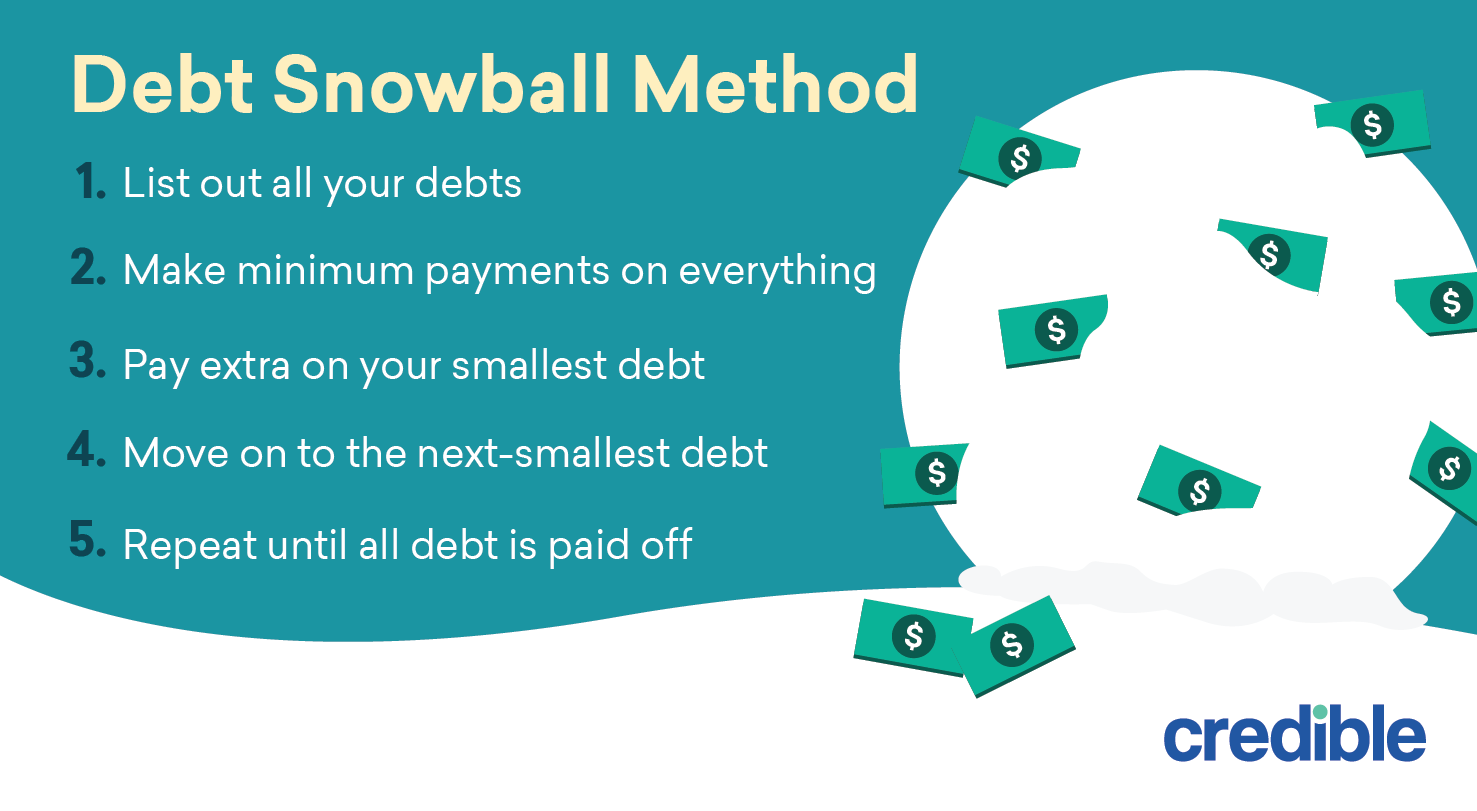
Tip: The debt snowball method typically offers more immediate success, which could be helpful if you’re driven by small wins.
But if you’d rather save more money on interest and don’t mind waiting to see your results, the debt avalanche method might be a better option for you.
4. Build an emergency fund
Having an emergency fund can help you pay for unexpected costs and avoid racking up more debt.
In general, it’s a good idea to save enough in an emergency fund to cover three to six months’ worth of expenses — including student loan payments.
Here are a couple of savings options you might consider:
High-yield savings account: This type of savings account generally offers above-average interest rates. This means you could get a higher rate of return compared to regular savings accounts. Several high-yield savings accounts don’t require an initial deposit, which could be helpful for starting an emergency fund.Money market account: This is another savings option that typically provides a higher rate of return than regular savings accounts. Money market accounts often come with higher initial deposits and maintenance requirements compared to high-yield savings accounts, so could be a good option if you already have some money stashed away.Tip: To get started on your emergency fund, you might save as little as $5 or $10 per week.
As you get used to saving, you can gradually increase the amount you plan to save in your budget.
accordions_header_toggle = “no”;
accordions_click_track = “yes”;
jQuery(document).ready(function($){
wizard_accordion = $(“#accordions-55641.accordions .items”).accordion({
event: “click”,
collapsible:true,
heightStyle: “content”,
animate: (“linear”, 1000),
navigation: true,
active: 999999,
beforeActivate: function(event, ui) {
if (ui.newHeader[0]) {
var currHeader = ui.newHeader;
var currContent = currHeader.next(“.ui-accordion-content”);
} else {
var currHeader = ui.oldHeader;
var currContent = currHeader.next(“.ui-accordion-content”);
}
var isPanelSelected = currHeader.attr(“aria-selected”) == “true”;
currHeader.toggleClass(“ui-corner-all”,isPanelSelected).toggleClass(“accordion-header-active ui-state-active ui-corner-top”,!isPanelSelected).attr(“aria-selected”,((!isPanelSelected).toString()));
currHeader.children(“.ui-icon”).toggleClass(“ui-icon-triangle-1-e”,isPanelSelected).toggleClass(“ui-icon-triangle-1-s”,!isPanelSelected);
currContent.toggleClass(“accordion-content-active”,!isPanelSelected)
if (isPanelSelected) { currContent.slideUp(); } else { currContent.slideDown(); }
return false;
},
changestart: function(event, ui) {
child.accordion(“activate”, false);
}
});
var child = $(“.child-accordion .items”).accordion({
active:true,
beforeActivate: function(event, ui) {
// The accordion believes a panel is being opened
if (ui.newHeader[0]) {
var currHeader = ui.newHeader;
var currContent = currHeader.next(“.ui-accordion-content”);
// The accordion believes a panel is being closed
} else {
var currHeader = ui.oldHeader;
var currContent = currHeader.next(“.ui-accordion-content”);
}
// Since weve changed the default behavior, this detects the actual status
var isPanelSelected = currHeader.attr(“aria-selected”) == “true”;
// Toggle the panels header
currHeader.toggleClass(“ui-corner-all”,isPanelSelected).toggleClass(“accordion-header-active ui-state-active ui-corner-top”,!isPanelSelected).attr(“aria-selected”,((!isPanelSelected).toString()));
// Toggle the panels icon
currHeader.children(“.ui-icon”).toggleClass(“ui-icon-triangle-1-e”,isPanelSelected).toggleClass(“ui-icon-triangle-1-s”,!isPanelSelected);
// Toggle the panels content
currContent.toggleClass(“accordion-content-active”,!isPanelSelected)
if (isPanelSelected) {
currContent.slideUp();
} else {
currContent.slideDown();
}
return false; // Cancels the default action
},
heightStyle: “content”,
collapsible: true,
animated: “swing”,
});
$(“.previous, .next”).click(function () {
var index = 0;
console.log(“gCurrentIndex:”+gCurrentIndex);
console.log(“index:”+index);
if ($(this).hasClass(“next”)) {
index = gCurrentIndex + 1;
if (index > ACCORDION_PANEL_COUNT ) {
index = ACCORDION_PANEL_COUNT;
}
}
else {
index = gCurrentIndex – 1;
if (index
jQuery(document).ready(function($){
$(“#accordions-55641 .expand-collapse”).click(function() {
if( $(this).hasClass(“active”) ) $(this).removeClass(“active”);
else $(this).addClass(“active”);
accordion_id = $(this).attr(“accordion-id”);
$(“#accordions-“+accordion_id+” .ui-accordion-header:not(.ui-state-active)”).next().slideToggle();
});
$(“#accordions-55641 .accordions-head”).click(function () {
toogle_text = $(this).attr(‘toogle-text’);
main_text = $(this).attr(‘main-text’);
if(accordions_header_toggle==’yes’){
if( $(this).hasClass(‘ui-state-active’) ){
if( main_text != null && main_text != ”){
$(this).children(‘.accordions-head-title’).html(main_text);
}
} else {
if( toogle_text != null && toogle_text != ”){
$(this).children(‘.accordions-head-title’).html(toogle_text);
}
}
id = $(this).attr( ‘id’ );
}
if(accordions_click_track==’yes’){
header_id = $(this).attr(‘header_id’);
post_id = $(this).attr(‘post_id’);
$.ajax({
type: ‘POST’,
context: this,
url:accordions_ajax.accordions_ajaxurl,
data: {
“action” : “accordions_ajax_track_header”,
“header_id” : header_id,
“post_id” : post_id,
},
success: function( data ) {>
#accordions-55641 {
text-align: left;
}
#accordions-55641{
background:#ffffff url() repeat scroll 0 0;
padding: 2px;
}
#accordions-55641 .accordions-head{
background:rgba(255,255,255, 1) none repeat scroll 0 0;
margin:0px 0px 0px -12px;
padding:7px 7px 7px 0px;
}
#accordions-55641 .accordions-head-title{
color:#202022;
font-size:13px;
font-family:;
}
#accordions-55641 .accordions-head-title-toogle{
color:#202022;
font-size:13px;
}
#accordions-55641 .accordions-head:hover .accordions-head-title{
color:#202022;
}
#accordions-55641 .ui-state-active{
background: #ffffff;
}
#accordions-55641 .accordion-content{
background:rgba(255,255,255,1) none repeat scroll 0 0;
color:#202022;
font-size:18px;
font-family:;
margin:5px 5px 5px -5px;
padding:3px;
}
#accordions-55641 .accordion-icons{
color:#6dc3a8;
font-size:18px;
padding:0px;
background: ;
}
#accordions-55641 .accordions-head:hover .accordion-icons{
color:#6dc3a8;
}
#accordions-55641 .expand-collapse{
}
@media screen and (min-width: 1200px) {
#accordions-55641 {
width: 100%;
}
}
@media screen and (max-width:1199px) and (min-width: 768px) {
#accordions-55641 {
width: 100%;
}
}
@media screen and (max-width: 767px) {
#accordions-55641 {
width: 100%;
}
}
.accordions-head-title {
font-family: “Open Sans”, sans-serif;
}
.accordion-content {
font-family: “Open Sans”, sans-serif;
}
.accordion-content p {
line-height: 1.7 !important;
margin-top: .5em;
}
.ui-helper-reset {
line-height: 1.7 !important;
}
.accordions .accordions-head {
align-items: baseline;
}
.accordion-icons {
top: -.125em;
}
.accordions-head-title h3 {
margin-top: 0;
font-weight: 600;
}
.ui-widget-content a {
color: #4eb696 !important;>
jQuery(document).ready(function($){
jQuery(document).on(‘keyup’, ‘#search-input-55641 input.search-input’, function(){
keyword = jQuery(this).val().toLowerCase();
content_head = [];
content_body = [];
$(‘#accordions-55641 .items .accordions-head-title’).each(function( index ) {
content = $( this ).text().toLowerCase();
content_head[index] = content;
$( this ).parent().removeClass(“accordion-header-active”);
$( this ).parent().removeClass(“ui-state-active”);
});
$(‘#accordions-55641 .items .accordion-content’).each(function( index ) {
$( this ).hide();
content = $( this ).text().toLowerCase();
content_body[index] = content + ‘ ‘ + content_head[index];
n = content_body[index].indexOf(keyword);
if(nFinancially Fit Survey Sweepstakes
Official Sweepstakes Rules
Financially Fit Survey Sweepstakes
Official Sweepstakes Rules
NO PURCHASE OR PAYMENT NECESSARY TO ENTER OR WIN. MAKING A PURCHASE DOES NOT INCREASE YOUR CHANCES OF WINNING.
The following promotion is intended for participants in the fifty (50) United States and Washington D.C. only and shall be construed and evaluated according to the laws of the United States. Do not proceed in this promotion if you are not a legal U.S. resident residing in the fifty (50) United States or Washington D.C. Further eligibility restrictions are contained in the official rules below.
1. SWEEPSTAKES DESCRIPTION: The Financially Fit Survey Sweepstakes begins on Oct. 5, 2021 at 12:01 a.m. PT and ends on Oct. 19, 2021 at 11:59 p.m. PT.
The sponsor of this Sweepstakes is Credible Labs, Inc. (“Sponsor”). Sweepstakes void where prohibited or restricted by law. THIS SWEEPSTAKES IS IN NO WAY SPONSORED, ENDORSED, ADMINISTERED BY, OR ASSOCIATED WITH TWITTER OR INSTAGRAM.
2. ELIGIBILITY: The Sweepstakes is open only to legal residents of the fifty (50) United States and the District of Columbia who are physically located and residing therein and who are at least eighteen (18) years of age and the age of majority in their state of primary residence at the time of entry (“Entrant”). Entrants are limited to one entry each. Employees, shareholders, officers, directors, agents, and representatives of Sponsor, Presenter, Administrator (collectively, “Sweepstakes Entities“), and each of their respective parent companies, affiliates, divisions, subsidiaries, agents, representatives and promotion and advertising agencies are not eligible to participate in the Sweepstakes. Immediate family and household members of such individuals are also not eligible to enter or win. For purposes of the Sweepstakes “household members” shall mean those people who share the same residence at least three months a year and “immediate family members” shall mean parents, step-parents, legal guardians, children, step-children, siblings, step-siblings, or spouses. Void in Puerto Rico, all U.S. territories and possessions and overseas military installations, and where prohibited.
3. HOW TO ENTER: During the Entry Period, eligible Entrants may participate by completing the Financially Fit survey.
Online Entry:
Entrant must complete the following steps for Online Entry:
Visit https://hxfu0nh43pu.typeform.com/finance-quiz (the “WebsiteFollow the onscreen instructions to complete the survey.Affirmatively accept the Official Rules and click “Enter”.
Limit one (1) Submission per Entrant, per Entry Period. Any attempt by an Entrant to obtain more than the stated number of entries by using multiple/different identities, registrations, logins, and/or any other methods will void such Entrant’s Submission and that Entrant may be disqualified from the Sweepstakes.
Entries generated by a script, macro or other automated means will be disqualified. Incomplete, unreadable, or unintelligible entries will be disqualified. ELIGIBLE ENTRANTS MUST SUBMIT THEIR ENTRY IN ACCORDANCE WITH THESE OFFICIAL RULES. NO ALTERNATE FORM OF ENTRY WILL BE ACCEPTED. Participation in the Sweepstakes constitutes Entrant’s understanding of and full and unconditional agreement to and acceptance of these Official Rules. Sweepstakes Entities reserve the right to disqualify any Entrant that they determine to be in violation of any term contained in these Official Rules. Sweepstakes Entities reserve the right to move, change or extend deadlines or dates in their sole discretion. Such changes, if applicable, will be communicated on the Website, on the Sponsor’s Instagram account, and on the Sponsor’s Twitter account.
4. WINNER SELECTION & NOTIFICATION: Following the conclusion of each Entry Period, in accordance with the dates and times as detailed in the Entry Period Chart above, Administrator will randomly select one (1) potential winner from all eligible entries for the corresponding Entry Period. Potential winner notification will vary according to the channel of Sweepstakes entry:
Online Entry
If the potential winner entered via Online Entry, he or she will be contacted via the email address provided on the entry form.
Winners will be responsible for any and all federal, state and/or local taxes resulting from acceptance of the Prize. No cash or prize substitution is allowed except at the discretion of Sweepstakes Entities. If a prize cannot be awarded due to circumstances beyond the control of the Sweepstakes Entities, a substitute prize of equal or greater retail value may be awarded; provided, however, that if Prizes are awarded but unclaimed/forfeited by recipient, Prize may not be re-awarded, in Sweepstakes Entities’ sole discretion. Other restrictions may apply.
5. CONDITIONS OF PARTICIPATION/RELEASES: All federal, state and local laws and regulations apply. By participating, each Entrant agrees to be bound by these Official Sweepstakes Rules and the decisions of the Sweepstakes Entities, which shall be final in all respects. By participating in this Sweepstakes and/or by accepting any prize that they may win, each Entrant agrees to release and indemnify the Sweepstakes Entities; each of their respective parent, subsidiary and affiliated companies, units and divisions and advertising and promotional agencies and Prize suppliers; each of their respective officers, directors, agents, representatives and employees; and each of these companies and individuals’ respective successors, representatives and assigns (collectively, the “Released Parties“) from any and all actions, claims, injury, loss or damage arising in any manner, directly or indirectly, from participation in this Sweepstakes and/or acceptance, use, or misuse of any prize. Acceptance of a prize authorizes the Sponsor, Presenter and their designees to use each winner’s Social Media handle, Social Media profile picture, name, voice, likeness, biographical data, city and state of residence in programming or promotional material, throughout the universe in perpetuity, or on a winner’s list, if applicable, without further compensation unless prohibited by law. By entering the Sweepstakes, Entrants agree that: (1) any and all disputes, claims, and causes of action arising out of or connected with the Sweepstakes, or any prizes awarded, shall be resolved individually, without resort to any form of class action; (2) any and all claims, judgments and awards shall be limited to actual out-of-pocket costs incurred, including costs associated with entering the Sweepstakes, but in no event will Entrant’s attorneys’ fees be awarded or recoverable; and (3) under no circumstances will any Entrant be permitted to obtain any award for, and Entrant hereby knowingly and expressly waives all rights to seek, punitive, incidental or consequential damages and/or any other damages, other than actual out-of-pocket expenses, and/or any and all rights to have damages multiplied or otherwise increased. The Released Parties shall not be liable for: (i) late, lost, delayed, stolen, misdirected, postage-due, incomplete, unreadable, inaccurate, garbled or unintelligible entries, communications or affidavits, regardless of the method of transmission; (ii) telephone system, telephone or computer hardware, software or other technical or computer malfunctions, lost connections, disconnections, delays or transmission errors; (iii) data corruption, theft, destruction, unauthorized access to or alteration of entry or other materials; (iv) any injuries, losses or damages of any kind caused by the prize or resulting from acceptance, possession, use or misuse of a prize, or from participation in the Sweepstakes; (v) the Entrant’s claim that he or she has somehow been defamed or portrayed in a false light or (vi) any printing, typographical, human administrative or technological errors in any materials associated with the Sweepstakes. The Released Parties assume no responsibility for any damage to an Entrant’s computer system, or for any computer system, phone line, hardware, software or program malfunctions, or other errors, failures, delayed computer transmissions or network connections that are human or technical in nature, or for the incorrect or inaccurate capture of information, or the failure to capture any information. Sweepstakes Entities reserve the right, in their sole discretion, to cancel, modify or suspend the Sweepstakes (or any portion of the Sweepstakes) should a virus, bug, computer problem, unauthorized intervention or other cause or problem corrupt or inhibit the administration, security or proper play of the Sweepstakes and, in such situation, to select the Winner from eligible non-suspect entries received prior to and/or after such action or in such manner as deemed fair and appropriate by the Sweepstakes Entities. Sweepstakes Entities may prohibit you from participating in the Sweepstakes or winning a Prize if, in their sole discretion, they determine you are attempting to undermine the legitimate operation of the Sweepstakes by cheating, hacking, deception, or any other unfair playing practices of intending to annoy, abuse, threaten or harass any other Entrants or the Released Parties representatives.
6. GOVERNING LAW: ALL ISSUES AND QUESTIONS CONCERNING THE CONSTRUCTION, VALIDITY, INTERPRETATION AND ENFORCEABILITY OF THESE OFFICIAL RULES, OR THE RIGHTS AND OBLIGATIONS OF ENTRANTS OR THE RELEASED PARTIES IN CONNECTION WITH THE SWEEPSTAKES OR IN CONNECTION WITH ANY SUBMISSION OR OTHER MATERIAL SUBMITTED IN CONNECTION WITH THE SWEEPSTAKES, SHALL BE GOVERNED BY AND CONSTRUED IN ACCORDANCE WITH THE INTERNAL LAWS OF THE STATE OF CALIFORNIA WITHOUT GIVING EFFECT TO ANY CHOICE OF LAW OF CONFLICT OF LAW RULES OR PROVISIONS THAT WOULD CAUSE THE APPLICATION OF ANY OTHER STATE’S LAWS. THE INVALIDITY OR UNENFORCEABILITY OF ANY PROVISION OF THESE RULES SHALL NOT AFFECT THE VALIDITY OR ENFORCEABILITY OF ANY OTHER PROVISION. IN THE EVENT THAT ANY PROVISION IS DETERMINED TO BE INVALID OR OTHERWISE UNENFORCEABLE OR ILLEGAL, THESE RULES SHALL OTHERWISE REMAIN IN EFFECT AND SHALL BE CONSTRUED IN ACCORDANCE WITH THEIR TERMS AS IF THE INVALID OR ILLEGAL PROVISION WERE NOT CONTAINED HEREIN.
IN NO EVENT WILL THE RELEASED PARTIES, THEIR RESPECTIVE PARENT, AFFILIATES, SUBSIDIARIES AND RELATED COMPANIES, THEIR ADVERTISING OR PROMOTION AGENCIES, WEB MASTERS/SUPPLIERS, VENDORS, CONTRACTORS OR EACH OF THEIR RESPECTIVE OFFICERS, DIRECTORS, EMPLOYEES, SHAREHOLDERS, MEMBERS, SUCCESSORS, ASSIGNS, REPRESENTATIVES AND AGENTS BE RESPONSIBLE OR LIABLE FOR ANY DAMAGES OR LOSSES OF ANY KIND, INCLUDING DIRECT, INDIRECT, INCIDENTAL, CONSEQUENTIAL OR PUNITIVE DAMAGES ARISING OUT OF ENTRANT’S PARTICIPATION IN THE SWEEPSTAKES. WITHOUT LIMITING THE FOREGOING, ALL PRIZES AND THE SWEEPSTAKES ARE PROVIDED “AS IS,” WITHOUT WARRANTY OF ANY KIND, EITHER EXPRESS OR IMPLIED, AND THE SWEEPSTAKES ENTITIES HEREBY EXPRESSLY DISCLAIM ALL IMPLIED WARRANTIES, INCLUDING, BUT NOT LIMITED TO, IMPLIED WARRANTIES OF MERCHANTABILITY, FITNESS FOR A PARTICULAR PURPOSE OR NON-INFRINGEMENT SOME JURISDICTIONS MAY NOT ALLOW LIMITATIONS OR EXCLUSION OF LIABILITY FOR INCIDENTAL OR CONSEQUENTIAL DAMAGES OR EXCLUSION OF IMPLIED WARRANTIES, SO SOME OF THE ABOVE LIMITATIONS OR EXCLUSIONS MAY NOT APPLY TO YOU. CHECK YOUR LOCAL LAWS FOR ANY RESTRICTIONS OR LIMITATIONS REGARDING THESE LIMITATIONS OR EXCLUSIONS. CAUTION: ANY ATTEMPT TO DELIBERATELY DAMAGE OR UNDERMINE THE LEGITIMATE OPERATION OF THE SWEEPSTAKES MAY BE A VIOLATION OF CRIMINAL AND CIVIL LAWS AND SHOULD SUCH AN ATTEMPT BE MADE, THE RIGHT IS RESERVED TO SEEK DAMAGES TO THE FULLEST EXTENT OF THE LAW.
7. ARBITRATION PROVISION: By participating in this Sweepstakes, each Entrant agrees that any and all disputes the Entrant may have with, or claims Entrant may have against, the Released Parties relating to, arising out of or connected in any way with (i) the Sweepstakes, (ii) the awarding or redemption of any prize, and/or (iii) the determination of the scope or applicability of this agreement to arbitrate, will be resolved individually and exclusively by final and binding arbitration administered by the National Arbitration Forum (the “Forum”) and conducted before a sole arbitrator pursuant to the Code of Procedure established by the Forum. The arbitration shall be held at a location determined by the Forum pursuant to the Code of Procedure, or at such other location as may be mutually agreed upon by the Entrant and Sponsor. The arbitrator’s decision shall be controlled by the terms and conditions of these Official Rules and any of the other agreements referenced herein that the applicable Entrant may have entered into in connection with the Sweepstakes. There shall be no authority for any claims to be arbitrated on a class or representative basis; arbitration can decide only the Entrant’s and/or Sponsor’s individual claims and the arbitrator may not consolidate or join the claims of other persons or parties who may be similarly situated. The arbitrator shall not have the power to award special or punitive damages against the Entrant or Released Parties. For more information on the Forum and/or the Forum’s Code of Procedure, please visit their website at www.arb-forum.com. If any part of this Arbitration Provision is deemed to be invalid or otherwise unenforceable or illegal, the balance of this Arbitration Provision shall remain in effect and shall be construed in accordance with its terms as if the invalid or illegal provision were not contained herein.
8. PRIVACY POLICY: Any personal information supplied by you to Sponsor will be subject to Sponsor’s privacy policy posted at [URL] By entering the Sweepstakes, you grant Sponsor permission to share your social media handle, email address and any other personally identifiable information with the other Sweepstakes Entities for the purpose of Sweepstakes administration and prize fulfillment. Sponsor will not sell, rent, transfer or otherwise disclose your personal data to any third party other than as described herein or in accordance with Sponsor’s privacy policy.
9. SPONSOR: Credible Labs, Inc. 115 Sansome Street, Suite 600, San Francisco, CA 94104
The Sweepstakes is in no way sponsored, endorsed or administered by Instagram or Twitter. Instagram and Twitter are completely released of all liability by each Entrant in this Sweepstakes.
The post 4 Steps to Becoming Finance Fit appeared first on Credible.
Did you miss our previous article…
https://www.coloradomicrofinance.org/?p=149




